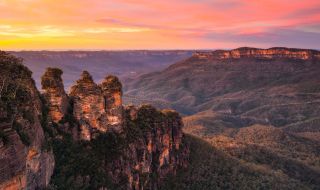
- NSW Road trips
- Accommodation
- Be inspired
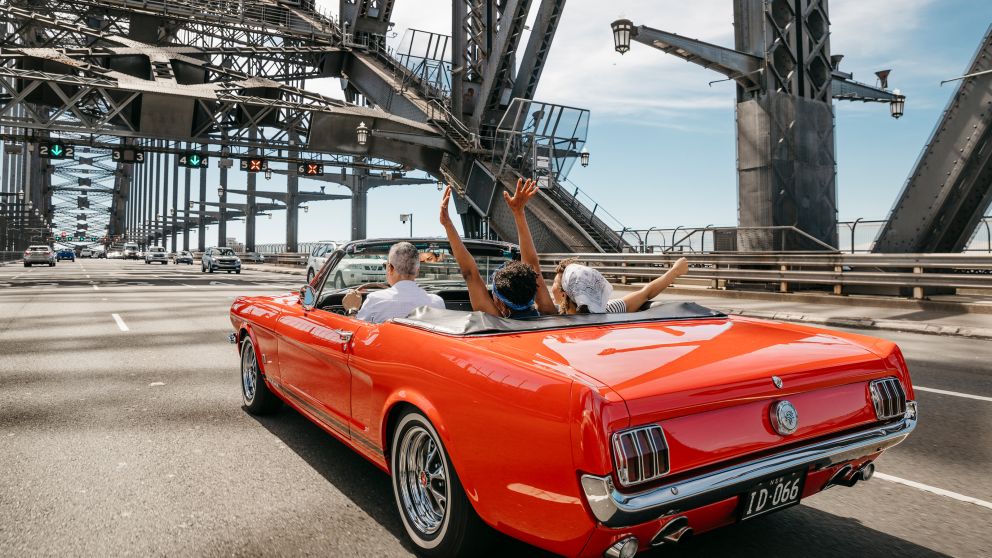
- travel information

Getting around Sydney
An efficient network of transport options connects the attractions and suburbs of Sydney and regional NSW, including buses, trains, ferries and light rail.
Sydney public transport
Transport for NSW provides a variety of ways to get around the city, as well as information for motorists. Use the trip planner at transportnsw.info to plan your travel.
Opal card info
The Opal card is an easy, convenient way of paying for your travel on public transport in Sydney. It can be used on all public transport, including trains, ferries, buses and light rail. There are daily and weekly caps on the Opal network, meaning you can travel as much as you like within the Opal network and you never pay more than the capped fare. The Sydney Airport station access fee isn’t included in the travel caps.
Opal cards can be obtained from train stations and the domestic and international airport, as well as many retailers across the city. For more information, visit opal.com.au.
You can also pay with contactless-enabled American Express, Mastercard or Visa credit or debit cards or a linked device, by tapping on and tapping off at Opal readers. Contactless payments are available on all public transport in the Opal network and you will receive the same travel benefits of an Adult Opal card.
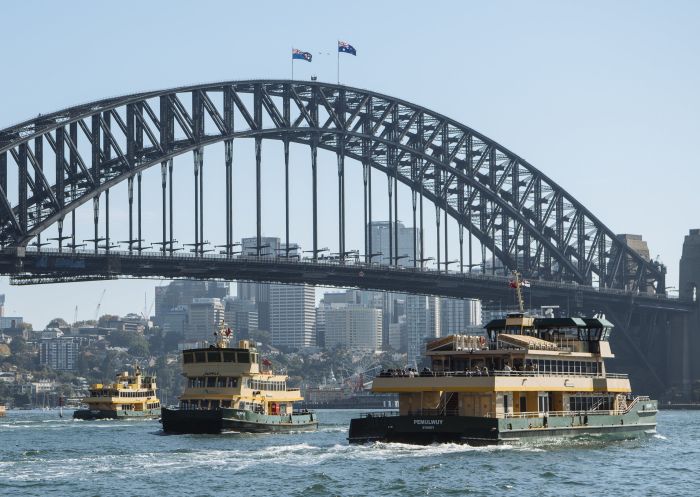
Ferries on Sydney Harbour
Sydney buses
Buses form a key part of Sydney’s public transport system, connecting all areas of the city, including those without rail or water transport. There are also NightRide services replacing most train routes between midnight and 4:30am.
Key bus routes include:
- 333 – Connecting Circular Quay to Bondi
- B1 – Wynyard to Mona Vale
- 373 – Connecting Museum to Coogee
- 380 - Watsons Bay to Bondi Junction
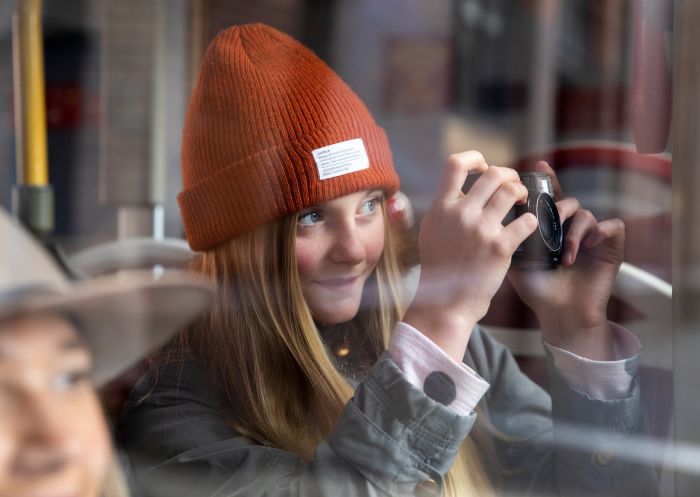
Family enjoying a guided tour of Sydney with Big Red Bus Tours, Sydney
Sydney rail
Sydney's main terminus for local and regional trains and buses is Central Station at Railway Square, close to Chinatown. Trains operate North to the CBD and across the harbour to North Sydney and beyond, as well as east to Bondi Junction and South past and including Sydney Airport. Sydney train maps and train timetables can be found at Transport NSW .
Sydney light rail
The L1 Inner West Light Rail network operates in both directions between Central Station and Dulwich Hill in Sydney’s West. The CBD and South East Light Rail includes the L2 Randwick Line connecting Circular Quay to Randwick and the L3 Kingsford Line between Circular Quay and Junior Kingsford. Visit Transport NSW for more information and for a Sydney Light Rail map.
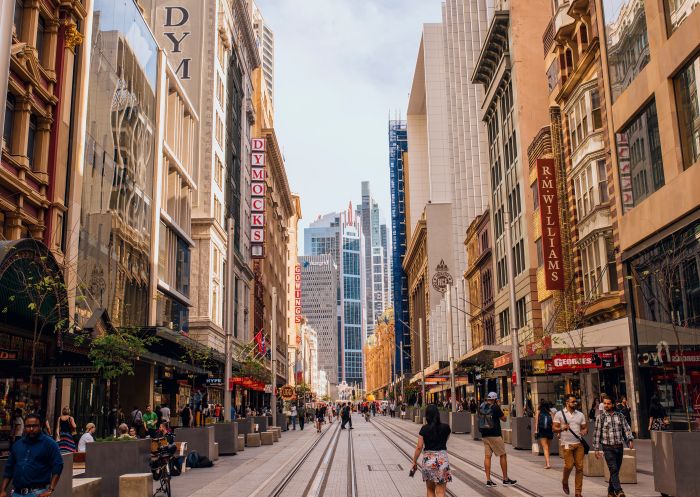
Tramlines running down George Street, Sydney CBD
Sydney ferries
Ferries provide a fast and convenient way to cross the harbour, as well as offering a fantastic vantage point of the city. From Circular Quay you can take the Manly Fast Ferry or F1 to Manly, the F2 to Taronga Zoo and the F4 to Watsons Bay and Rose Bay.
Captain Cook also operates ferries between various locations including between Watsons Bay and Manly, Circular Quay and Clifton Gardens and from Circular Quay to Shark Island.
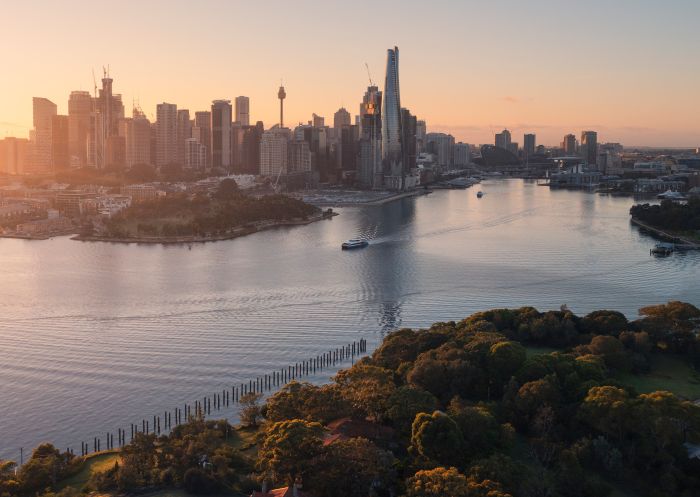
View at sunrise of Goat Island , Sydney Harbour
River ferries
The river ferry travels up the Parramatta River from Circular Quay to Parramatta, with stops along the way including Cockatoo Island, Cabarita and Sydney Olympic Park. The full journey takes about 90 minutes depending on stops.

Friendship Ferry cruising under Sydney Harbour Bridge , Sydney Harbour
A bicycle is a great way to get around Sydney. Cyclists use kerbside bike lanes and are permitted on most of Sydney's multi-lane roads. Find Sydney cycle maps, routes and more information .
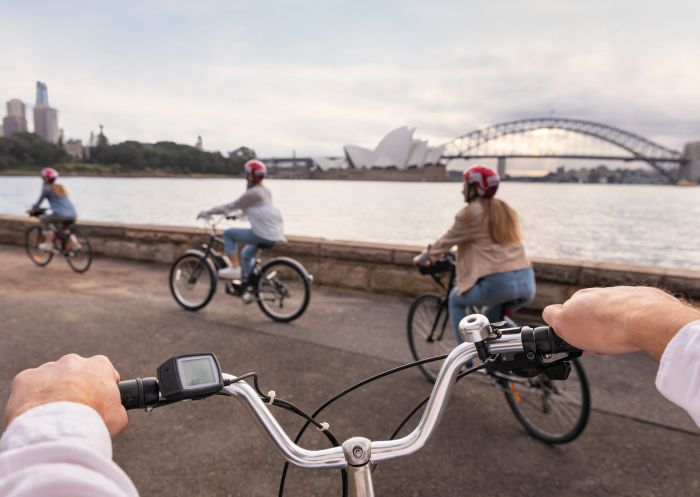
Bonza Bike Tours , Royal Botanic Garden
Driving in Sydney
Australians drive on the left-hand side of the road. If you’re travelling from overseas, you are able to drive in Australia with your foreign driver's licence for three months, as long as that licence is in English. If your licence is not in English, you will need to attain an International Drivers Permit (IDP) to use in Australia.
Seat belts are compulsory in Australia, with the driver responsible for ensuring all passengers are wearing them. Using hand-held mobile phones is prohibited. The blood alcohol limit is 0.05% throughout Australia and is enforced with random breath tests. Pay attention to speed limits – speed cameras are used across Sydney and NSW.
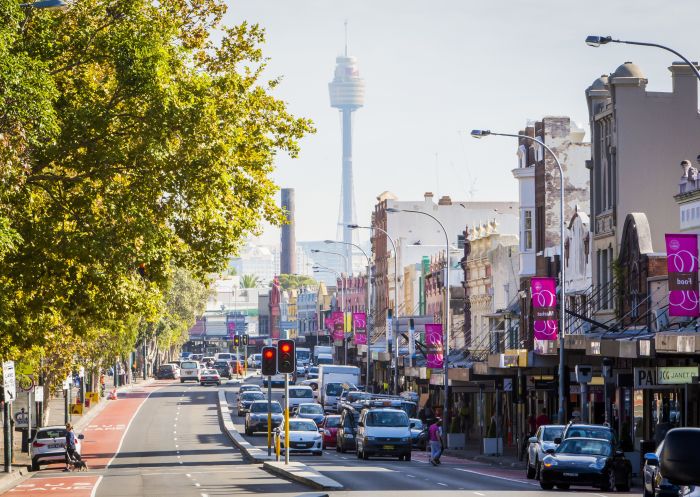
Shops and cafes lined up along Oxford Street, Paddington
Parking in Sydney
Parking can be limited and expensive in the CBD and close to popular beaches. Many of Sydney’s streets are restricted to permit holders, with time limits applied to non-permit holders or with metered parking. Fees range from $2.50 to $8 per hour depending on the location and time of day.
The cheapest way to park in the city centre is to pre-book online. Secure and Wilson parking offer cheaper advance rates and parkopedia.com is also a useful resource when looking for parking. If parking on the street, ensure you park in line with traffic.
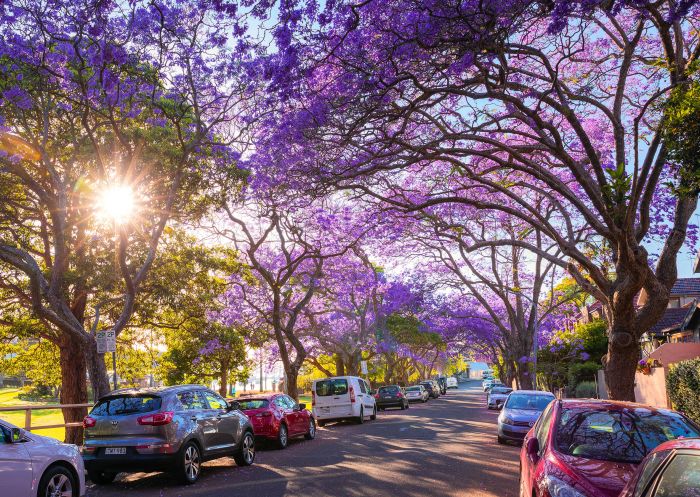
Jacaranda trees in full bloom along McDougall Street, Kirribilli
Toll roads
Sydney has a number of toll roads and tunnels, including the Harbour Bridge, Harbour Tunnel, Cross City Tunnel and Eastern Distributor. This is charged via an electronic system. If you have a rental car, it will most likely have an e-tag installed and you will be billed at a later date. If you don’t have an e-tag, you can obtain one from the following websites:
roam.com.au
linkt.com.au
myetoll.com.au
If you pass through a toll road without a tag, ensure you call the number advertised to pay the toll, otherwise, you may incur a fine.

The Cahill Expressway, Sydney CBD
Car rentals in Sydney
You’ll find a range of car rental options in Sydney, including car, 4WD, campervan and classic car hire .
Electric vehicle charging points
Electric vehicle charging points can be found across Sydney and NSW. Make sure you check their locations before setting out on your journey. You can find a full list on the Electric Vehicle Council website .
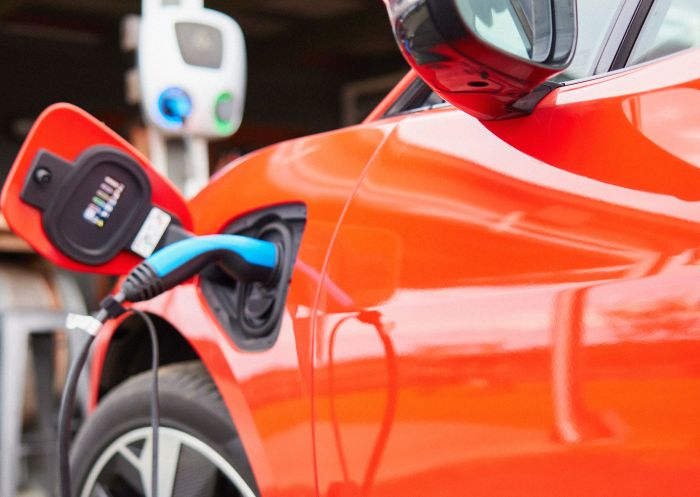
Electric car charger at Mountain Ridge Wines, Coolangatta
Taxis & private transport
Taxis and water taxis are a convenient way to get around Sydney. Rideshare services also operate in Sydney and include Uber, Ola and Didi.
- Legion Cabs : 13 14 51
- Premier Cabs : 13 10 17
- Silver Service Cabs : 13 31 00
- St George Cabs : 13 21 66
- 13CABS : 13 22 27
- Wheelchair Accessible Taxis (WATS)
- Fantasea Yellow Water Taxis : 1800 326 822
- Water Taxis Combined : 02 9555 8888
- V.I.P Water Taxis : 0418 847 777
- Majestic Water Taxi : 0439 625 377
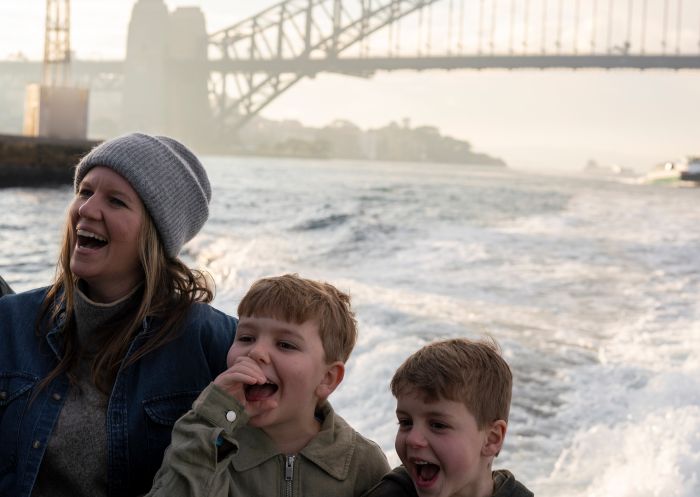
Family enjoying the views aboard a Majestic Water Taxi, Sydney Harbour
Travelling beyond Sydney
Sydney airport .
Sydney Airport is located about 9 kilometres south of Sydney's city centre in the suburb of Mascot.
The three passenger terminals at Sydney Airport are:
- T1: International Terminal is used for international flights.
- T2: Domestic Terminal is used by domestic and regional airlines including Jetstar , Rex , Virgin Australia and FlyPelican .
- T3: Domestic Terminal is used for Qantas and QantasLink domestic flights.
Transport services such as buses, taxis, car hire, rail and shuttle bus services are conveniently located at Sydney Airport.
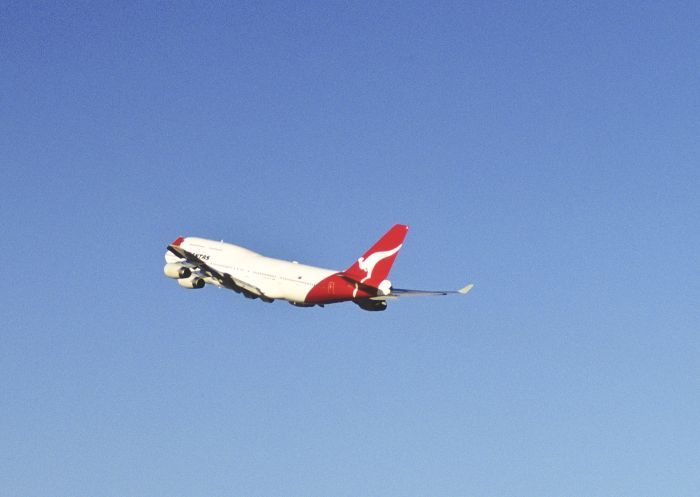
Qantas plane taking off from the airport, Sydney Airport
Sydney cruise terminals
There are two cruise ship terminals in Sydney Harbour. The main Overseas Passenger Terminal is on Circular Quay’s western side in the historic Rocks and opposite the Sydney Opera House. The White Bay Cruise Terminal is near Anzac Bridge and is best accessed from James Craig Road in Rozelle.
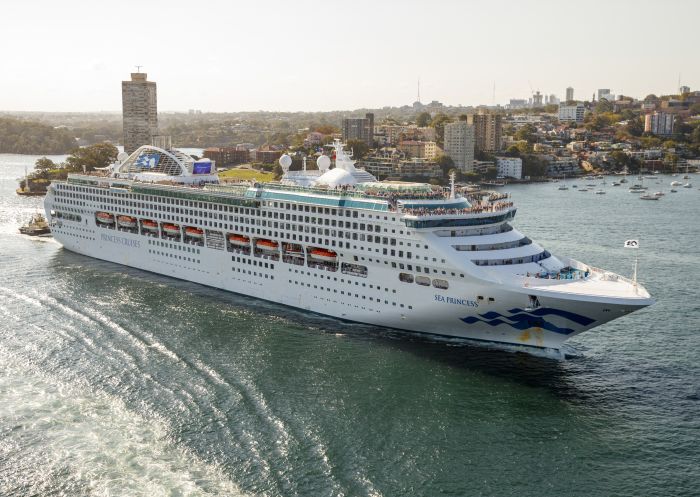
The Sea Princess cruise, Sydney Harbour
Intercity & Country NSW trains
Trains depart Central Station for many NSW destinations, including the South Coast, Blue Mountains, Southern Highlands, Central Coast, North Coast, Country NSW and Outback NSW. Travelling long distances is easy and affordable on regional train and coach services .
Regional bus services
Private bus companies run daily services along the coast and to regional NSW, as well as to other states from Sydney CBD and Central Station.
- Firefly Express : 1300 730 740 within Australia
- Greyhound : +61 13 14 99
- Murrays : +61 13 22 51
- Priors Scenic Express : 1800 816 234 within Australia
Accessible transport
All ferries, trains and new buses in NSW are wheelchair accessible, providing easy access for prams and other mobility devices. You can ask for assistance boarding or leaving transport. Visit Transport for NSW’s accessible travel web page for more information.
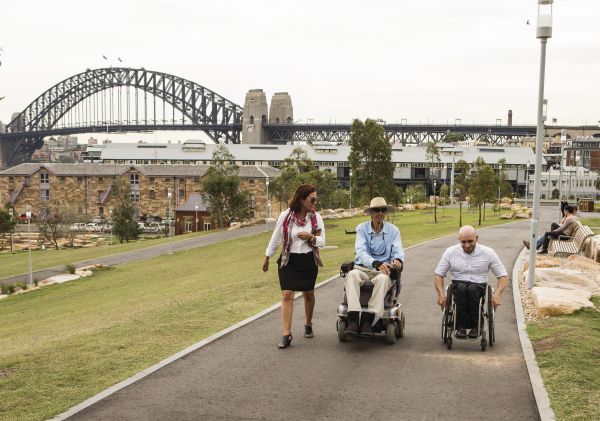
Opal Card FAQs
How does the opal card work.
Opal cards are essentially smartcard tickets used to pay for travel on public transport in Sydney. To use the Opal card, you must first load value onto it. Then at the start of your journey, you tap on at a designated Opal card reader. When you arrive at your destination, you tap off, in the same way that you tapped on, and the designated Opal card reader will display your fare. The fare is calculated according to the distance you have travelled and it is automatically deducted from the value on your Opal card account (or charged to your contactless payment card). Opal cards are reusable and must be reloaded once your account reaches low figures to continue using public transport in the Opal system network.
How much is an Opal card?
There is no charge for an Opal card. However, when obtaining an Adult Opal card, the minimum value of $20 must be loaded onto the card. This amount is then used to pay future fares on the Opal network. The minimum value for a Child/Youth Opal card is $10 and this amount can also be used in the same way as an Adult Opal Card, to pay for future fares on the Opal network.
Where can I buy an Opal card?
Opal cards can be purchased over the counter from Opal retailers, this includes convenience stores, grocery stores, newsagents and pharmacies. Look for the Opal symbol at shops in your area to locate an Opal card retailer.
How do I top up my Opal card?
There are many ways to top up your Opal card. The most convenient way is by logging into your account or through the Opal Travel app, registering your Opal card to your account, adding a debit or credit card and setting up an automatic top up. When your Opal card balance reaches a certain minimum value, it will automatically add a set amount by charging your card. If you prefer to do manual top ups, this can also be done through the Opal Travel app or by logging onto your account. Additionally, you can top up your Opal card over the counter at Opal retailers or the Opal top up machines available at selected stations, stops and wharves.
Can I use my credit card instead of my Opal card?
Yes, you can use your credit card to tap on and off the Opal network system as an alternative to travelling with an Adult Opal card. American Express, Mastercard and Visa debit cards with the contactless payment symbol are also other accepted forms of contactless payments. Using any of these payment methods, you will be charged the same Adult Opal fare as you would be charged using your Opal card.
If you have more than one payment method on your mobile device, ensure you use the same card to tap on and off the Opal system to avoid being charged the maximum default fare.
Can you use your phone as an Opal card?
Opal cards do not come in a digital form, but you can use your iPhone (or other smart device) to tap on and off the Opal system network and pay for the fare from your digital wallets using contactless payments. Select the card you want to charge the fare to in your digital wallet and tap onto the designated Opal card reader. The Opal reader will show a “tap success” message to signify that payment has been accepted. At the end of your journey, hold the same device you tapped on with over the Opal reader until you see the confirmation that payment has been accepted.
Is there a discount for children using Opal cards?
Yes, there are Child/Youth Opal cards that are available for children aged 4-15 years of age. Child/Youth Opal cards can also be used by full time NSW and ACT students, aged 16 and older, with a current NSW secondary student concession card. Child/Youth Opal cards can be purchased from Opal retailers or can be applied for online. The Child/Youth Opal cards provides children with discounted fares on the Opal system network. Children under the age of three travel for free on the Opal network. Contactless fares are charged at the equivalent of an Adult Opal ticket, even if used by a child or youth.
What happens if I forget to tap on or tap off with my Opal card?
If you forget to tap on at the beginning of your journey, but tap off at the end of your trip, you will be charged the default fare for an incomplete trip. Similarly, if you tap on, but do not tap off at the end of your journey, you will also be charged the default fare amount.
The amount of a default fare varies depending on the transportation taken:
The default bus fare is $4.71.
The default fare on the ferry is $7.51.
The default fare using the light rail is $3.66.
The default fare for trains is $8.69.
Can two people use the same Opal card?
Only one Opal card can be used on one trip at a time. You must not tap on twice with the same Opal card to pay for another person’s trip. Technically, you can share an Opal card as long as you are not riding on the same trip. Two individual cards are needed if you plan to travel at the same time.
What happens if I lose my Opal card?
If your registered Opal card has been lost, stolen or damaged, you can transfer the balance to another Opal card that is also registered to you. However, if you do not obtain a new Opal card and register it to your account, you will only be able to block the original lost, stolen or damaged Opal card.
Once you have your new Opal card, you can request the balance from the lost, stolen or damaged Opal card to be transferred to your new card. Call 13 67 25 to request the balance from the original card to be transferred to your new card.
Does Opal offer any discounts?
Yes, there are a number of benefits when you travel in the Opal network with an Opal card or credit or debit card.
Daily travel caps - travel all day in the Opal network and never pay more than $16.80 a day for Adult, $8.40 a day for Child/Youth and Concession and $2.50 a day for Gold Senior/Pensioner.
Weekly travel caps - travel all week in the Opal network and never pay more than $50 a week for Adult, $25 a week for Child/Youth and Concession and $17.50 a week for Gold Senior/Pensioner
Weekend travel cap - travel all day on Saturday, Sunday and public holidays and never pay more than $8.40 a day for Adult, $4.20 a day for Child/Youth or Concession and $2.50 a day for Gold Senior/Pensioner
Weekly Travel Rewards - if you have paid for eight journeys in one week (Monday to Sunday), your fares will be half price for the rest of the week.
30% discount with off-peak metro/train/bus/light rail fares - when you travel outside of peak times with your Opal card.
Opal Transfer Discount - when travelling with more than one mode of transport on the same journey (train, ferry, bus or light rail), a $2 discount (adults) is applied to each transfer, within 60 minutes from the last tap off.
Travel apps & information
Live traffic nsw app .
Receive up to the minute news of road incidents and conditions that may affect your journey in Sydney and the NSW regions.
Download the Live Traffic NSW App from the App Store
Download the Live Traffic NSW App from Google Play
TripView displays Sydney train, bus, ferry and light rail timetables, showing your next services. By TripView Pty Ltd.
Download TripView from the App Store
Download TripView from Google Play
Next Station
Next Station provides trip planning and timetables, real-time vehicle position and service alerts in multiple languages covering Sydney’s public transport network, NSW TrainLink and NSW regional buses.
Download Next Station from the App Store
Download Next Station from Google Play
Next Station web app

Subscribe to our newsletter
Stay connected to Sydney for all the latest news, stories, upcoming events and travel inspiration.
Discover Somewhere New
All the insider news, tips and inspiration you need to plan your next trip, delivered straight to your inbox.
Destination NSW acknowledges and respects Aboriginal people as the state’s first people and nations and recognises Aboriginal people as the Traditional Owners and occupants of New South Wales land and water.
- NSW Government
- Destination New South Wales (Corporate site)
Sydney.com is the official tourism site for Destination NSW. © Copyright 2024 Destination NSW. All rights reserved

Australia Recommends 2024

Come and Say G'day

G'day, the short film

Discover your Australia

Travel videos

Deals and offers

Australian Capital Territory

New South Wales

Northern Territory

South Australia

Western Australia

External Territories

The Whitsundays

Mornington Peninsula

Port Douglas

Ningaloo Reef

Airlie Beach

Kangaroo Island

Rottnest Island

Hamilton Island

Lord Howe Island

Tiwi Islands

Phillip Island

Bruny Island

Margaret River

Barossa Valley

The Grampians

Hunter Valley

McLaren Vale

Glass House Mountains

Alice Springs

Uluru and Kata Tjuta

The Kimberley

Flinders Ranges

Kakadu National Park

Eyre Peninsula

Karijini National Park

Great Barrier Reef

Blue Mountains

Daintree Rainforest

Great Ocean Road

Purnululu National Park

Cradle Mountain-Lake St Clair National Park

Litchfield National Park

Aboriginal experiences

Arts and culture

Festivals and events

Food and drink

Adventure and sports

Walks and hikes

Road trips and drives

Beaches and islands

Nature and national parks

Eco-friendly travel

Health and wellness

Family travel

Family destinations

Family road trips

Backpacking

Work and holiday

Beginner's guide

Accessible travel

Planning tips

Trip planner

Australian budget guide

Itinerary planner

Find a travel agent

Find accommodation

Find transport

Visitor information centres
Deals and travel packages

Visa and entry requirements FAQ

Customs and biosecurity

Working Holiday Maker visas

Facts about Australia

Experiences that will make you feel like an Aussie

People and culture

Health and safety FAQ

Cities, states & territories

Iconic places and attractions

When is the best time to visit Australia?

Seasonal travel

Events and festivals

School holidays

Public holidays
How to get to Australia's most iconic cities

How long do I need for my trip to Australia?

How to travel around Australia

Guide to driving in Australia

How to hire a car or campervan

How to plan a family road trip

How to plan an outback road trip

Sydney Harbour, Sydney, New South Wales © Destination NSW
Getting around Sydney
Whether you drive or take advantage of the city’s efficient public transport system, you’ll find it easy to get around Sydney.
By Mark Sariban
Even with its diverse suburbs and attractions, Sydney is a straightforward city to get around. The metropolitan area offers a great network of public transport, roadways and cycling and walking paths. Just hop on a bus, train or ferry and start exploring.
Transport in Sydney

Belmont Wharf, Belmont, New South Wales © Destination NSW
- Airport Transfers
- Accessibility
Sydney has an extensive public transport system of buses, trains, metro rail, light rail and ferries. To use the network, you’ll need to either purchase an Opal card or use a contactless credit card, debit card or mobile device.
- Use an Opal card or your preferred payment method on public transport services in Sydney, the Blue Mountains , Central Coast, Hunter Valley , Illawarra and the Southern Highlands .
- Purchase an Opal card and load it with funds at participating retailers such as newsagents, convenience stores and supermarkets, and at Sydney Airport. There are also top-up machines at some train stations, light rail stops and ferry wharves.
- Tap your Opal card on the reader when you board your selected mode of transport, and be sure to tap the reader again when you disembark.
Tip: If you are using a credit card, debit card or mobile device instead of an Opal card, be sure to tap on and off with the same payment method.
Sydney is serviced by Sydney Airport (SYD) in the city’s south. There are several options for reaching the city from the domestic and international terminals.
- The T8 Airport and South train line stops at stations on Sydney’s City Circle. Travel time between the city and airport is around 10–15 minutes, with services running approximately every 10 minutes.
- You’ll find taxi ranks and rideshare pick-up areas at the front of each terminal – simply follow the signage. The journey from the airport to the city takes around 20 minutes.
Tip: If you’re in a group, it will be less expensive to travel to the city by taxi or rideshare.
Sydney has plenty of accessible attractions that can be reached by public transport. Check the Transport NSW’s Accessible travel page for information on using a wheelchair or mobility device on public transport, or select the ‘Accessible services only’ option when using Transport NSW’s Trip Planner tool.
- Sydney Airport provides special assistance for people with disabilities and can help with baggage, getting around the airport, and getting on and off the plane.
- Most Sydney train stations are accessible for people using a wheelchair or mobility device and station staff will assist with boarding ramps.
- The majority of Sydney buses are accessible. Look for the wheelchair symbol on the front window of the bus: the driver can lower the bus and extend a ramp to the kerb.
- The city’s light rail stations have dedicated wheelchair waiting areas. The driver or light rail staff can provide a boarding ramp.
- The expanding Sydney Metro network is fully accessible.
- All Sydney ferries are accessible, but some older ferry wharves require you to navigate stairs. Use the Trip Planner tool or review the list of accessible wharves when planning your journey.
Tip: Use the City of Sydney’s online Access and inclusion map to easily locate accessible toilets, public transport facilities and car parks in the city.
Getting around Sydney on public transport

Sydney Trains, Sydney, New South Wales © Destination NSW
- Sydney Metro
Sydney’s train network is an efficient way of travelling around the city. Take the City Circle to connect to the harbour ferries at Circular Quay, the retail precinct around Town Hall Station, and Central Station. Use the Trip Planner tool to map your route.
- Take inter-city lines west to the Blue Mountains, south to Kiama and north to Newcastle from Central Station.
- NightRide bus services replace trains between midnight and 4.30am.
Sydney’s light rail network has three main lines.
- The L1 line runs from Central Station through harbourside Pyrmont to the inner-west suburb of Dulwich Hill.
- The L2 and L3 lines depart from Circular Quay and travel to Central Station on their way to the city’s eastern suburbs.
Sydney has a comprehensive bus network . Many buses travel through the city from Wynyard and Circular Quay, and beyond to Sydney’s suburbs, beaches and regional areas. Selected bus routes run 24 hours a day, seven days a week.
Regional bus services operated by Firefly Express , Greyhound and Murrays depart from Eddy Avenue in front of Central Station.
With its sparkling harbour, Sydney was made for ferry travel. Ferry services operate around Sydney Harbour from Circular Quay, cruising to destinations such as the beachside hotspot of Manly, Taronga Zoo Sydney , Luna Park , Barangaroo, Darling Harbour and more. Check out the map guide to see all the routes on the Sydney ferries network.
The latest addition to the Sydney public transport network, driverless Metro trains operate on the Metro North West Line from the northern suburb of Chatswood to Macquarie University and Tallawong in the north-west of Sydney.
Getting around Sydney by car

Scenic Drive, Sydney, New South Wales © Destination NSW
Driving in Sydney is straightforward and safe, but you may find it’s easier to use a combination of taxis, rideshares and public transport to get around town. You can also book tours to many of the stunning destinations outside of Sydney and leave the driving to someone else.
If you do opt to rent a car at the airport or in the city, you may want to check whether your hotel charges a daily parking fee. There may be free as well as paid street parking options, or you can use secure car parks across the city.
Tip: If you’re hiring an electric vehicle, you’ll find a map of charging stations here .
Sydney is served by numerous taxi companies.
- You can hail a taxi on the street (a taxi is available if its rooftop light is on) or at taxi ranks in built-up areas.
- Secure taxi ranks operate late at night on Fridays and Saturdays in busy locations.
- You can also book a taxi by phoning individual companies, or by downloading an app from 13cabs or GoCatch.
Tip: You may be asked to pre-pay your fare at the driver’s discretion.
Most major ridesharing platforms operate in Sydney, including Uber , Ola and DiDi , as well as local operator GoCatch .
Tip: Female travellers can also book a ride with Shebah , a rideshare service with all-women drivers catering to women. (Adult men can use the service if they need to transport a child who requires an approved child safety seat.)
Make the most of your time in Sydney with a guided tour . There are numerous tour operators providing customisable half-day and full-day driving tours of the city and surrounds, including Personalised Sydney Tours and Sydney Private Day Tours .

Where to stay in Sydney
Other forms of transport in Sydney

Hop-on Hop-off at the Opera House, Sydney, New South Wales © Big Bus Tours
- Water taxis
- Cycling & scooting
Enjoy the city’s highlights from an open-top double-decker bus on a hop-on, hop-off Big Bus Tour departing from Circular Quay. Big Bus also offers tours of Bondi, departing from Central Station.
Water taxis are an efficient and fun way of travelling between harbourside attractions and waterfront restaurants. Water taxis can meet you at public and private jetties all around Sydney Harbour.
- Major operators include Water Taxis Combined and Fantasea Yellow Water Taxis.
Explore the hidden beaches and secluded coves of Sydney Harbour on a cruise departing from the wharves lining the entertainment precinct of Darling Harbour, Circular Quay and Manly.
See Sydney Harbour from a different perspective on a seaplane flight. Sydney Seaplanes and Sydney By Seaplane both offer sightseeing tours of Sydney Harbour and the surrounding coastline from their bases at Rose Bay, in the city’s eastern suburbs.
Tip: Sydney Seaplanes and Sydney By Seaplane can fly you to selected waterfront fine dining restaurants in the city’s northern reaches for a memorable lunch.
With an extensive network of separated bike paths, cycling around Sydney is easy. Hire a bike and download the City of Sydney’s cycling map to plan a trip along cycleways, shared paths and streets with low levels of traffic.
Tip: Motorised scooters, e-scooters and Segways are not permitted on roads or footpaths in Sydney.
More articles like this

We use cookies on this site to enhance your user experience. Find out more . By clicking any link on this page you are giving your consent for us to set cookies.
Acknowledgement of Country

We acknowledge the Traditional Aboriginal and Torres Strait Islander Owners of the land, sea and waters of the Australian continent, and recognise their custodianship of culture and Country for over 60,000 years.
- New Zealand (English)
- United States (English)
- Canada (English)
- United Kingdom (English)
- India (English)
- Malaysia (English)
- Singapore (English)
- Indonesia (Bahasa Indonesia)
- Deutschland (Deutsch)
- France (Français)
- Italia (Italiano)
- 中国大陆 (简体中文)
*Product Disclaimer: Tourism Australia is not the owner, operator, advertiser or promoter of the listed products and services. Information on listed products and services, including Covid-safe accreditations, are provided by the third-party operator on their website or as published on Australian Tourism Data Warehouse where applicable. Rates are indicative based on the minimum and maximum available prices of products and services. Please visit the operator’s website for further information. All prices quoted are in Australian dollars (AUD). Tourism Australia makes no representations whatsoever about any other websites which you may access through its websites such as australia.com. Some websites which are linked to the Tourism Australia website are independent from Tourism Australia and are not under the control of Tourism Australia. Tourism Australia does not endorse or accept any responsibility for the use of websites which are owned or operated by third parties and makes no representation or warranty in relation to the standard, class or fitness for purpose of any services, nor does it endorse or in any respect warrant any products or services by virtue of any information, material or content linked from or to this site.
48-Hour Itinerary
Day Trips From Sydney
Top Things to Do
Best Beaches
Museums to Visit
Parks in Sydney
Shopping Guide
Must-Try Food
Best Restaurants
Nightlife Guide
Best Time to Visit
Weather & Climate
Sydney Airport Guide
Neighborhoods to Know
Public Transportation
Getting Around Sydney: Guide to Public Transportation
:max_bytes(150000):strip_icc():format(webp)/IMG_2751-c8e99122470c4e26861511881ad3a6cd.jpg)
As a sprawling, beachside state capital with more than five million residents, public transport is essential for Sydney. The city is Australia's leading public transport hub, with 20.9 percent of residents using it to travel to work in 2016, compared to 13.4 percent of Melbourne residents. The public transport in Sydney has steadily improved over the past decade as the city has become less reliant on driving.
Sydney's public transport network is made up of regular trains, buses, ferries, light rail, and the newly opened driverless Metro line. Local trains offer extensive coverage across the city, mainly via above-ground lines, although many beaches (including tourist hotspot Bondi) are best reached by buses. A free, pre-loadable card called an Opal allows visitors to use all public transport through a tap-on tap-off system.
If you have a contactless Visa debit or credit card, you can also use it to pay at the Opal card readers. (Adult Opal fare prices are charged using this method, including daily and weekly fare caps.) However, be aware that your bank may charge international transaction fees on each transaction. If you are traveling in a group, each person will need to use a different Opal card or credit card to tap on and off.
At some stations, you can still buy single tickets, but buying an Opal card as soon as you land in Sydney (at the airport or a nearby retailer) is probably the best bet for a stress-free trip. At the airport train stations, the minimum Opal top up is $35. At all other points of sale, the minimum is $10 for adults and $5 for children. You can use this credit and then top up your Opal when you run out, either online, via the Opal Travel app , through a ticket machine, or at an Opal retailer .
How to Ride Sydney Trains
Sydney's trains are the most popular and easiest way to get around. Since the first passenger railway was built in New South Wales in 1855 , the network has expanded across the city with nine lines that meet at Central Station, including an airport line, a light rail line, and the fully-automated Metro line. The train is also a great way to avoid peak hour traffic.
If you're thinking about venturing further afield, NSW TrainLink trains depart from Central station and connect Sydney to regional centers including the Blue Mountains, the Central Coast, Newcastle, Wollongong, Canberra and the Southern Highlands.
- Fares: Opal fares can be a little tricky to understand at first as they are determined by distance traveled. Train fares range from AU$3.61 for up to ten kilometers to AU$8.86 for 65 kilometers or more. If you go during off-peak times (weekends, public holidays and outside of 7 a.m. to 9 a.m. and 4 p.m. to 6.30 p.m.), you will be charged 30 percent less than these prices. Fares are capped at AU$16.10 a day, AU$50 a week, or AU$8.05 on Saturday, Sunday and public holidays, meaning you will not pay more than this amount no matter how many trips you take. (This does not include the Sydney Airport station access fee of AU$14.87, which has a separate cap of two visits per week.) If you forget to tap off, you will be charged the maximum fare for that trip.
- Concessions: Adult fares apply to those aged 16 years and older, except for local students and those eligible for a concession . Children and those eligible for concession fares will need to purchase a specific Opal card to access these prices, which are usually around half of the adult fares. Children under four years of age travel free.
- Routes and Hours: Sydney's trains usually run every 5 to 15 minutes, with trains every couple of minutes in the city center and during peak times. Train services run from 4 a.m. to around midnight on most lines. Many bus routes operate 24/7, and NightRide buses replace most train services during the early hours of the morning. The City Circle at the heart of Sydney's train network is precisely what it sounds like; a route that passes underground from Central to the city's most frequented stations in the Central Business District and back to Central again.
- Service Alerts: Sydney's trains generally run on time, but delays and changes do occur. Track work, especially on weekends, can also disrupt service. You can find information about service changes on the Transport NSW website .
- Transfers: Transfers between Sydney Metro, Sydney Trains, and NSW TrainLink Intercity services are automatic, so there is no need to tap off and on again between them. All other transfers made within 60 minutes will be charged as a single journey. The Sydney Ferries Manly service is the only exception, with 130 minutes from when you tap on to transfer to another service.
- Accessibility: All trains and ferries in Sydney are accessible, with boarding ramps available on request. However, some train stations have stairs that restrict access, as do some ferry wharves. Accessible buses, with ramps and curbside kneeling capacity, can be identified with the international wheelchair symbol. These buses also have priority seating and extra space inside. You can visit the Transport NSW website or call 131 500 for more information on accessibility.
How to Ride Sydney Buses
Like many cities, Sydney's buses are mainly used late at night and to connect between train stations. They are also particularly useful in coastal neighborhoods, like the Northern Beaches and the Eastern Suburbs, and outer suburbs that lack rail connections. With hundreds of routes crisscrossing the city, buses are often the quickest way to get where you're going if you're familiar with the city.
- Fares: The same daily and weekly caps apply across all forms of public transport. Bus fares range from AU$2.24 for under three kilometers of off-peak travel to AU$4.80 for eight kilometers or more.
- Routes: The large number of bus routes in Sydney can be overwhelming. Check the Transport NSW website for maps or the TripView app to figure out your nearest bus stop.
- Hours: Most buses run 24 hours a day, seven days a week.
Other Transit Options
Sydney is sandwiched between the sea and the mountains, meaning there are some places that the local bus and train routes can't reach. Sometimes, ferries, bike- and ride-shares or rental cars might be a more straightforward choice.
Catching the Ferry
As a harbor city, Sydney's ferries are an important (and scenic) form of public transport. There are seven ferry routes, with essential services running from Manly and Mosman on the northern side of the harbor to Circular Quay. Ferries can be accessed using your Opal card and are a little more expensive than the train. Check the ferry timetable on the NSW Transport website in advance, as service can be scattered.
Riding a Bike
Biking is becoming increasingly popular in Sydney for commuters, with some dedicated bike paths and bike lanes available. There are no public bike-sharing programs, but Lime e-bikes are popular. It is illegal to ride a bike without a helmet, but only some of the Lime bikes come with helmets attached. If you're planning to cycle, also keep in mind that some parts of the city are quite hilly and the weather can be uncomfortably hot in summer.
Taxis and Ride-Sharing Apps
If you're in a rush or far from a train station, Sydney has plenty of taxis and ride-sharing apps like Uber to help you out. These operate all over the city and may even work out cheaper for groups, especially to and from the airport. Many locals prefer ride-sharing apps over taxis, which can be expensive, hard to find, and may refuse rides the driver deems too short.
Renting a Car
If you're planning to make a day trip or two outside of Sydney to visit the countryside or the Blue Mountains, a car will probably be necessary. However, parking in the city center can be costly, as can tolls to use certain roads, and peak hour traffic is a hassle, so most visitors can get by on public transport during their stay in Sydney.
Tips for Getting Around Sydney
- Split an Uber from the airport if you're traveling with a group rather than paying the AU$14.87 station access fee (plus the standard Opal fare) per person to take the train.
- Allow extra time for your journey late at night and on weekends, as trains are often replaced by buses due to trackwork.
- Stand on the left side of the escalator and walk on the right if you want to stay in Sydneysiders' good graces.
- Talking is prohibited in 'quiet carriages' which will be well-signposted. They are usually the first and last carriages of the train.
- Hold your hand out to hail the bus you want to catch; otherwise the driver will likely continue on their route right past you.
- Travel on Sundays , especially on the ferry, to make the most of the AU$8.05 Opal card cap.
- Avoid the north-south drive across the Harbour Bridge (or through the Harbour Tunnel) during morning traffic, from around 7 a.m. to 9 a.m. Centenary Drive, Lane Cove Road, Epping Road, Homebush Bay Drive, the Eastern Distributor, and Cahill Expressway are also notoriously slow before and after work.
Once you've got an Opal card, you'll be all set to get around Sydney on public transport. You can download the TripView app or use the trip planner on the Transport NSW website to plan your journey and get real-time service updates.
Getting Around Mexico City: Guide to Public Transportation
Getting to Downtown Sydney, Australia, From the Airport
Getting Around Salt Lake City: Guide to Public Transportation
48 Hours in Sydney: The Ultimate Itinerary
Getting Around Seattle: Guide to Public Transportation
Getting Around Melbourne: A Guide to Public Transportation
Your Trip to Sydney: The Complete Guide
Getting Around London: Guide to Public Transportation
Getting Around Los Angeles: Guide to Public Transportation
Getting Around Sao Paulo: Guide to Public Transportation
Getting Around Manchester: Guide To Public Transportation
Getting Around Lisbon: Guide to Public Transportation
Getting Around Busan: Guide to Public Transportation
Getting Around Shanghai: Guide to Public Transportation
Getting Around Prague: Guide to Public Transportation
Getting Around Rome: Guide to Public Transportation
Everything you need to know to get around Sydney this year

Nov 5, 2023 • 9 min read

Ferries are the best way to get around Sydney especially in summer © dinozzaver / Shutterstock
Sydney is not the easiest city to get around, but its public transport network is reliable, reasonably priced and way more convenient than driving. But by far, the best way to enjoy getting around Sydney is by taking a ferry or water taxi whenever possible.
Sydney’s transport network is as complex as its road system, which grew organically, marrying disparate settlements around the harbor. Sydney Harbour Bridge connects the North Shore with the city, taking buses, cars and trains – as well as pedestrians and cyclists – across it, and the Harbour Tunnel is an alternative vehicular crossing.
Over the summer months, you'll find much of it is also air-conditioned, although there's nothing better than standing on the deck of a ferry crossing Sydney Harbour.
Getting into Sydney city from the airport
You have three options if you’re not hiring a car from the airport : train, shuttle or taxi.
Trains depart from beneath the terminal, which is well signposted, but the fare is pretty steep for the short journey into the city, considering you’ll then need to travel onwards to your destination. Airport shuttle buses cost around $22 per person and will drop you at your city-based hotel. If you’re in a group, it may be cheaper to grab a taxi. The fare from the airport into the city center and neighboring suburbs is around $50, which is not bad when split between passengers.

Get yourself an Opal card on arrival
Sydney's public transport network runs on a ticketing system called Opal . You tap in with your Opal card when you start your trip and then tap out when it's complete. The system calculates and deducts the correct fare. Fares are based on the distance you travel and the mode of transport (ferry, bus, train, light rail). Electronic readers are located at train and metro station gates, inside the doors of buses, on light-rail platforms and at ferry wharves.
Opal cards can be ordered online or bought in person at numerous newsagents and convenience stores across Sydney. They must be loaded with credit (minimum $20/$10 for adult/child; $35 at the airport station, to cover the fee into town).
Note: you can only get a refund on unused credit to an Australian bank account, so it’s best to keep an eye on your balance and only top up when you need to towards the end of your stay.
Daily (and weekly) fare charges are capped; see the current fare cap online, but in 2023 it's $17.80 on a weekday and $50 for the week. On weekends, the maximum daily fare is half the usual daily fee, which makes weekends the best time to travel further, like Palm Beach or the Blue Mountains .
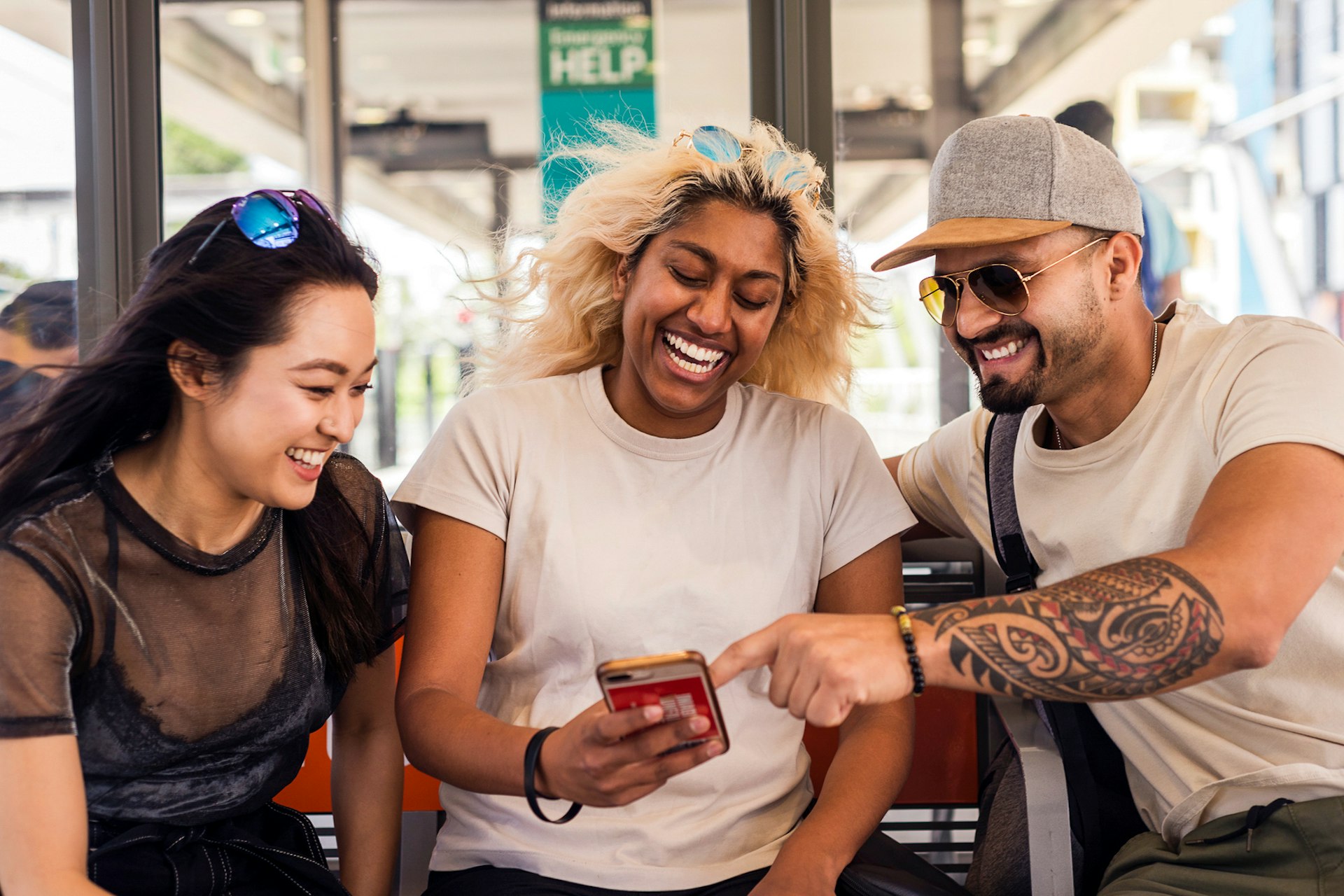
Other ways to pay for public transport
You can use your contactless credit card or smartphone at the electronic readers, but you may incur additional international bank fees for transactions.
If you’re making a one-off trip, then you can opt to buy a single-trip Opal ticket from bus drivers and at ticket offices at Circular Quay or major train stations. Unfortunately, you need to buy a new ticket if you change to a new mode of transport, so getting a rechargeable Opal card is almost always more convenient.
The joy of catching a ferry in Sydney
Most Transport NSW ferries operate between 6am and midnight and also use the Opal ticketing system. Most run about twice an hour. You check ferry timetables online. The standard adult one-way fare for most harbor destinations costs just over $6, but ferries to further destinations like Manly , Sydney Olympic Park and Parramatta are closer to $8.
There are also private ferry operators running in Sydney, like the Manly Fast Ferry, which makes the trip from Circular Quay to Manly in 18 minutes. Captain Cook Cruises is another private outfit that offers services with several stops around the harbor and all the way to Lane Cove.

How about zipping around Sydney in a water taxi?
Water taxis are a fast way to shunt around the harbor (Circular Quay to Watsons Bay in as little as 15 minutes, for example). Companies will quote on any pick-up point within the harbor and the river, including private jetties, islands and other boats. All have a quote generator on their websites; you can add in extra cruise time for a bit of sightseeing. It's often good value for groups.
Look out for companies like H2O Maxi Taxis and Water Taxis Combined .
Sydney buses are reliable – and air-conditioned
Transport NSW runs an extensive bus network, operating from around 4:30am to midnight, when less frequent NightRide services commence.
Bus routes starting with an M or E indicate express routes; those with an L have similarly limited stops; all are somewhat quicker than the regular bus lines.
There are several bus hubs in the city center: Wynyard Park by Wynyard train station; Railway Square by Central Station; the QVB close to Town Hall Station; and Circular Quay by the ferry, train and light-rail stops of the same name.
You tap on when you board, and remember to tap off when you hop off the bus, or you'll be charged the maximum fare. Have your card ready when the bus pulls up and when you’re getting off.
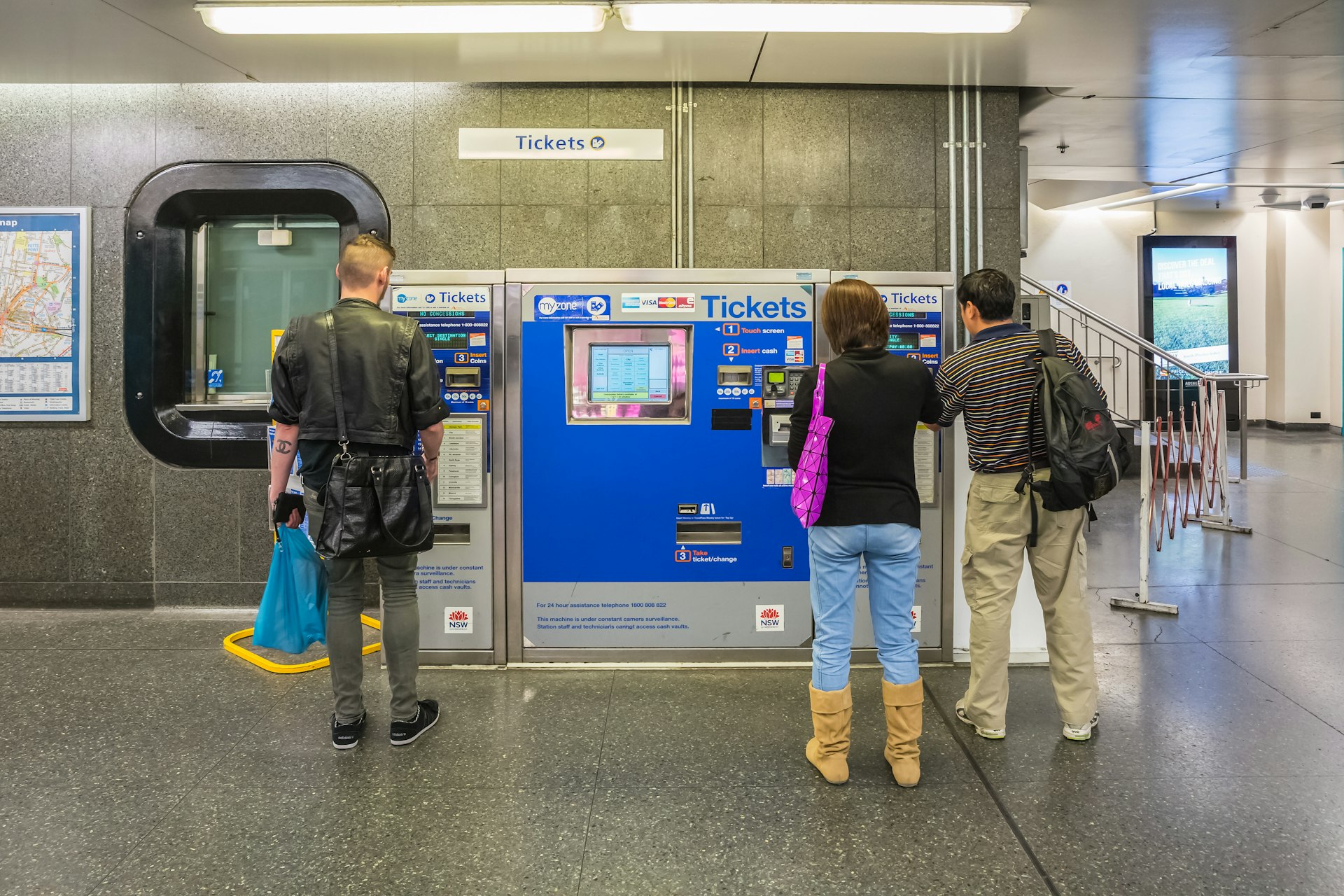
Trains are good, but they don't reach Sydney's beaches
Sydney has a large suburban railway web with relatively frequent services, although there are no lines to the northern or eastern beaches (i.e., Manly or Bondi).
Trains run from around 5am to midnight. You’ll need to find a NightRide bus in the small hours. These mostly leave from around Town Hall Station and pass through Railway Square at Central Station.
Note that trains are significantly more expensive at peak hours, which are from 7am to 9am and 4pm to 6:30pm, Monday to Friday. If you can travel outside peak hours, you’ll be more comfortable too.
Sydney's light rail trams are a plus
Light rail tram services are relatively new to Sydney. Okay, that isn’t entirely true. Sydney had an extensive tram network from the 1870s to 1961, when it was disbanded because the trams slowed down cars and caused congestion on the roads.
Today there are two connecting routes. One runs between Central Station and Dulwich Hill, stopping at Chinatown, Darling Harbour, the Star casino, Sydney Fish Market, Glebe and Leichhardt en route.
The second runs from Circular Quay through the city centre to Central Station, then shoots east through Surry Hills, heads past the Sydney Cricket Ground and on to Kingsford, with a branch veering to Randwick. Pedestrians should be on the lookout for these light rail trams when crossing tracks, as they're quick and pretty quiet.
Driving in Sydney has its drawbacks
Sydney’s geography really cuts different parts of the city up. Between the harbor, narrow lanes, and winding hilly roads, no car journey is quick or easy. Traffic can be a real problem. As well as Google Maps, the app Live Traffic NSW gives up-to-date news of incidents and conditions that affect journeys in Sydney.
Parking on the street and in private parking lots is expensive. Most machines take cards as well as coins. The cheapest way to park in the city center is to pre-book online; Wilson Parking has particularly attractive rates. Parkopedia is very helpful for finding the cheapest rates around where you want to park.
There are tolls on most of Sydney’s motorways and major links (including the Harbour Bridge, Harbour Tunnel, Cross City Tunnel, WestConnex and Eastern Distributor). The tolling system is electronic, meaning it’s up to you to organize an electronic tag (e-tag) or visitors’ pass. See the Transport NSW website for the various e-tag options. Most car-hire companies supply e-tags, but they may try to sell you an expensive all-inclusive rate. Read the fine print.
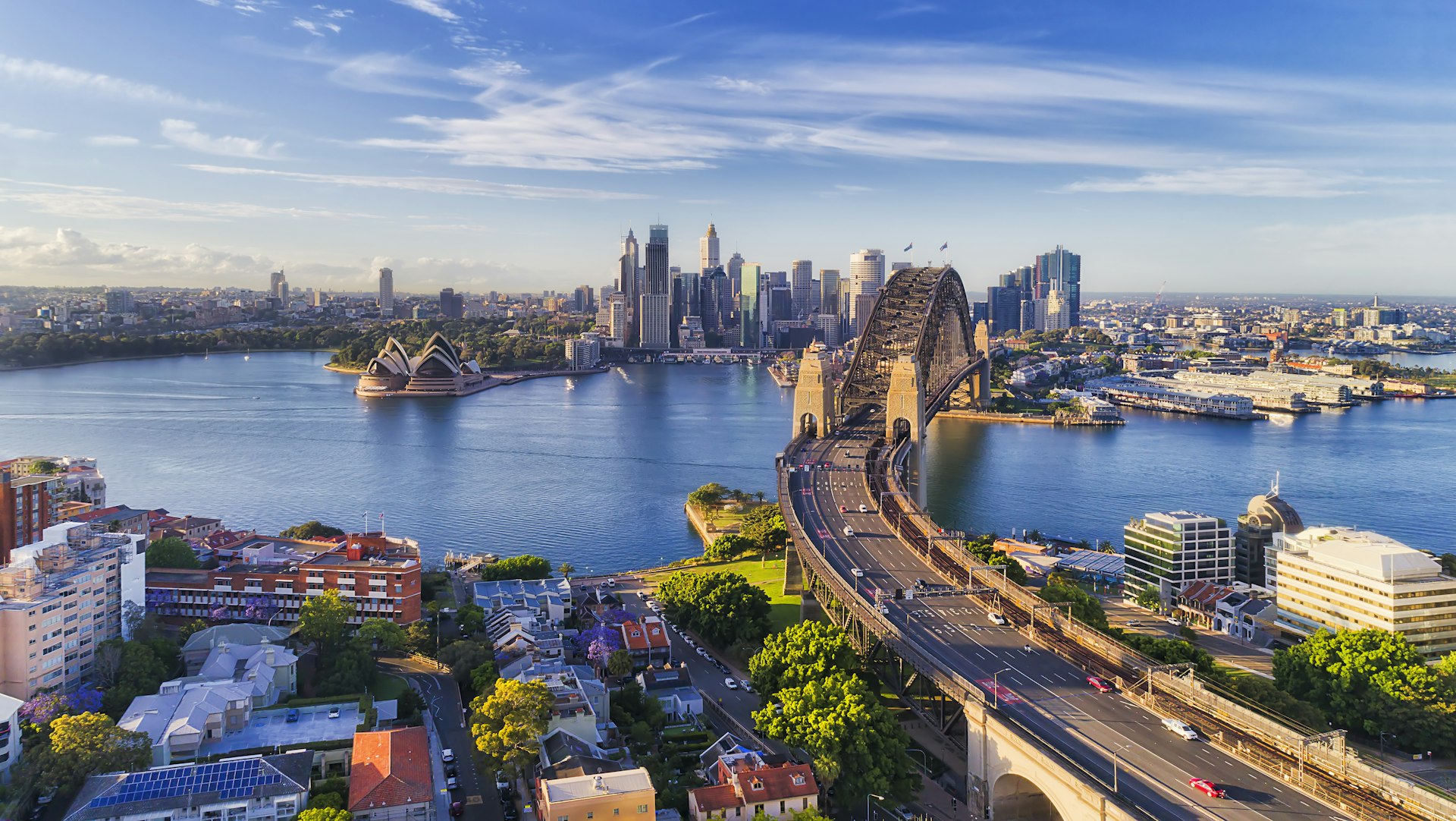
Sydney is navigable without a car
The only reason you’d want to hire a car in Sydney is to take it for day trips outside the city . The public transport system gets you pretty much anywhere – even to the Blue Mountains – and catching a ferry across the harbor to Manly beach is one of those must-do Sydney experiences. The northern beaches are less accessible without a car, but it can be done. Similarly, Bondi is a trek to get to via train and bus. But did we mention the traffic? You’re almost always better off on public transport anyway.
In other road-related news, Sydney announced it is adding dedicated koala crossings along one of its major roads out of the city, Appin Road heading southwest, as part of a long-term goal to double koala numbers in New South Wales by 2050.
Cycling in Sydney is not for novices
Cycling conditions are improving, but Sydney is not the most bike friendly city, and that's not just because of the hills!
Dubbed "the city that hates bikes" in 2010 – partly because of the aggression from car drivers and partly the lack of safe cycling infrastructure – you’re more likely to hire a bicycle for a leisurely cycle around Olympic Park or Centennial Park than use one to get from A to B at this stage of Sydney’s development.

Getting around Sydney with a baby
Sydney is reasonably accessible for traveling with a pram or stroller, with most transport, including ferries, offering lifts and ramps to embark. Look out for the wheeler-chair symbol to find the relevant exits and pathways through buildings like the Queen Victoria Building.
You can choose "accessible travel" to plan your journey on the Transport NSW website . Kids three and under travel on Sydney public transit for free. From four to 15 years, you’ll need to get them a separate child Opal card.
For an extra cost, car-hire companies will supply and fit child safety seats (these are compulsory in Australia for children under seven).
These are the best trips via public transport in Sydney
- Bus 389 Interesting bus route from Darling Harbour to Bondi Junction.
- Bus B1 Express bus from Wynyard to the Northern Beaches.
- City Circle does a loop of city train stations, making it handy for most attractions in the center.
- T1 is the northbound train line that crosses the Harbour Bridge.
- F1 is the Manly ferry, a glorious half-hour cruise from Circular Quay.
- F4 is a picturesque ferry ride that takes you from Circular Quay to Watsons Bay via Rose Bay
Best smartphone apps for using Sydney's transport network
There are several apps available with up-to-date information for Sydney transport. TripView is the app put out by Transport NSW. In addition, you might want to try:
This article was first published Jul 31, 2021 and updated Nov 5, 2023.
Explore related stories
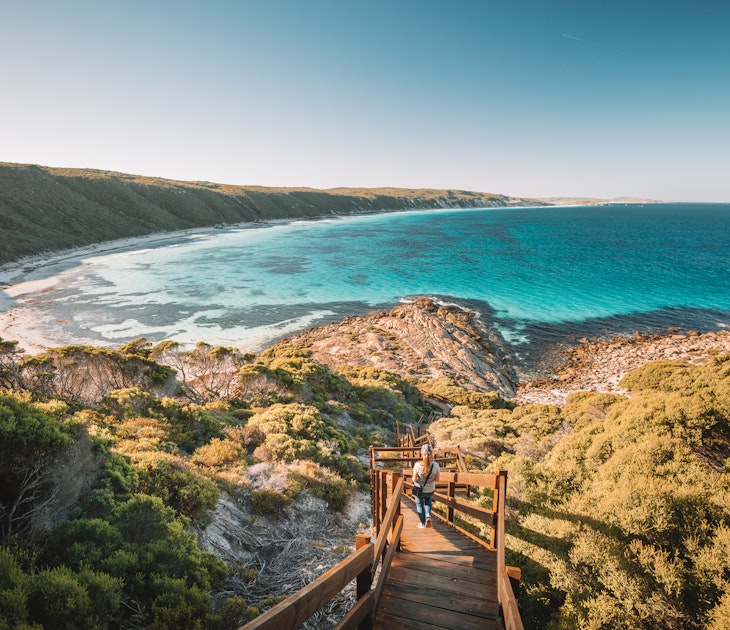
Tips & Advice
Mar 29, 2024 • 19 min read
A trip to Australia doesn't have to drain your wallet. Here’s your guide to traveling Down Under with points and miles.
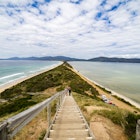
Dec 3, 2023 • 8 min read
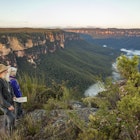
Nov 27, 2023 • 7 min read
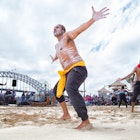
Nov 14, 2023 • 7 min read
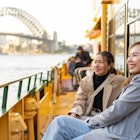
Nov 6, 2023 • 7 min read

Oct 31, 2023 • 7 min read

Oct 9, 2023 • 9 min read

Mar 17, 2023 • 5 min read

Nov 11, 2021 • 7 min read

Aug 7, 2021 • 9 min read
Awesome, you're subscribed!
Thanks for subscribing! Look out for your first newsletter in your inbox soon!
The best of Sydney for free.
Sign up for our email to enjoy Sydney without spending a thing (as well as some options when you’re feeling flush).
Déjà vu! We already have this email. Try another?
By entering your email address you agree to our Terms of Use and Privacy Policy and consent to receive emails from Time Out about news, events, offers and partner promotions.
Love the mag?
Our newsletter hand-delivers the best bits to your inbox. Sign up to unlock our digital magazines and also receive the latest news, events, offers and partner promotions.
- Things to Do
- Food & Drink
- Food & Drink Awards
- Coca-Cola Foodmarks
- Area Guides
- Theatre & Dance
- Music & Nightlife
- Restaurants & Cafes
- Bars & Pubs
- Visitor Guide
- Competitions
- Los Angeles
Get us in your inbox
🙌 Awesome, you're subscribed!

A guide to Sydney public transport
Where there’s a will, there’s a way, and public transport might just be the ticket

With a streetscape often compared to a bowl of tangled spaghetti, Sydney can be a little difficult to navigate. If you want to see all the sites and don’t have wheels (or just can’t keep your road rage in check) you’ll need to make the most of Sydney’s public transport. Want to avoid a sardine-style trip? Don’t ride during peak commuter hours: 7-9am and 5-7pm are the crunch times.
But despite the crowds, it’s definitely doable, and your first order of business should be acquiring an Opal card . You can use these on any train, bus, ferry or the light rail. They’re available to purchase and top-up at stations, convenience stores and the airport, and can score you a range of off-peak discounts like the Sunday price cap – when $2.70 will cover your entire day’s travel. Or, for an ultra-convenient trip, go contactless with your bank card or mobile phone. So plan your journey and hop aboard.
Still confused? See Time Out's top tips for first-time visitors.
An email you’ll actually love
Public transport in Sydney

Best for: Day trips to Sydney suburbs and beyond the city limits
Price: From $2.42 off-peak up to $8.50 per trip (with a daily price cap of $15.80)
With most inner city trains running till around midnight, the train network will get you around the CBD and link up with north, south, east and west lines to the surrounding suburbs. You’ll have quite a hike or a bus ride in store if you want to make it to the famous sands of Bondi, with Bondi Junction the most easterly stop (buses run from the station to the beach). But the trains are your ticket out of the city if the mood strikes. On the NSW TrainLink service you can take a day trip down South Coast or head to the Blue Mountains. But consider the Sydney train schedule as a guideline; commuters are no stranger to weather events, driver shortages and equipment malfunctions delaying services.

Best for: Exploring CBD attractions or heading to the Inner West (for now)
Price: $2.20-$3.6 (with a daily price cap of $15.80)
This is the most recent addition to the Sydney public transport family. The light rail currently runs from Central Station out to Dulwich Hill, stopping at popular CBD destinations like Paddy’s Markets and Darling Harbour and then onto the western neighbourhoods. A new line currently under construction will soon offer the service to more of the CBD and southeast towards Randwick. These stations accept contactless payment if you’ve left your wallet behind. You can use contactless-enabled American Express, Visa and Mastercard. Once on the platform, you’ll hear the delightful bell announcing its arrival every ten minutes or so. But don’t expect it to stick to a hard schedule: since they travel across pedestrian crossroads and traffic lights they don’t have the most reliable timetable.

Best for: Going further and staying out late
Price: $2.20-$4.71 (with a daily price cap of $15.40)
With more regular stops across the city and the NightRide services replacing most trains from midnight till 4am, buses are often your best bet. Not every bus has the luxury of air conditioning like the Light Rail, but they cover more ground, with more stops and often get you there faster. If you’re beach hopping, a bus will be your best friend for Bondi and Coogee trips, or become your tormentor on the hour-and-a-half journey to northern spots like Avalon and Palm Beach. Don’t forget to tap your Opal card on and off when boarding and alighting.

Best for: Heading to the northern seaside ’burbs, harbour island hopping or taking in the sites
Price: $6.01-$7.51 per trip (with a daily cap of $15.40)
Sydney Harbour is a site in itself, and the city’s ferries give you the perfect viewing platform while getting you from A to B. These cruisers now accept contactless payment for American Express, Visa and Mastercard, for more convenience during your trip. They’ll ferry you (sorry, we couldn’t help it) as far north as Manly and all the way to Parramatta, but it’s all about the ride, not the destination. On the Manly Ferry voyage, you’ll get a leisurely tour of the Harbour, gliding past the Sydney Opera House, Taronga Zoo and harbourside beaches. The ferry casts off every half hour, but if you miss the Manly run, check out other popular ferry routes to Cockatoo Island or Watsons Bay.

Walking and cycling
Best for: Shorter distances in peak commute times
Price: Walking is free (duh) and bike share services range from $0.30-$2 per 30 minute block
Like most major metropolitan hubs, there’s commuter madness in the mornings and evenings Monday to Friday. Sometimes it’s quicker to walk, so avoid the awkward eye contact and strong aromas of a packed public train and take a stroll instead. If you’re at Town Hall, you can wander to Circular Quay in 20 minutes. If it’s fresh produce and locally made goods you desire, you can reach Marrickville Markets from Newtown Station in about 25 minutes. If you fancy a peddle or just want to get places faster, there’s a range of dockless bike share operations around the city. You’ll need to be savvy with your smartphone and seek these out, as they’re commercially operated. A few of the bike sharing services in Sydney have tapped out of late, but you'll be sure to find a partially electric Lime Bike still haninging around the streets – they're a fixed price to unlock and 30 cents a minute to zoom around on.

Taxis, Uber and other services
Best for: Everything in between
Price: The 20 minute trip from the airport to the CBD should cost $25-$40 with a standard Uber and $35-$45 in a taxi
Guess what – Sydney has them. Ordering an Uber or Taxify in the city is a similar process to any other: get the app. Taxis can be hailed kerbside or found at several taxi ranks throughout the city centre. For a little peace of mind on a night out, there are secure taxi ranks that are patrolled by guards late on Friday and Saturday nights.
Plan your journey home after a big night out

The best clubs in Sydney
Sydney loves to party: we'll party on the roof, in the basement, by the pool, and at suburban bowling clubs. We've collected our city's best clubs and nightlife hotspots so you can make the most of Sydney's untz, untz, untz scene on your next big night out.
[image] [title]
Discover Time Out original video
- Acknowledgement of Country
- Press office
- Investor relations
- Work for Time Out
- Editorial guidelines
- Privacy notice
- Do not sell my information
- Cookie policy
- Accessibility statement
- Terms of use
- Reviews policy
- Competition terms
- About the site
- Modern slavery statement
- Manage cookies
- Advertising
- Report an error
- Time Out Market
Time Out products
- Time Out Worldwide
Public transport in Sydney

- 2 Opal cards
- 5.1.1.1 About
- 5.1.1.2 History
- 5.1.1.3 Timetable
- 5.1.2.1 About
- 5.1.2.2 History
- 5.1.2.3 Timetable
- 5.1.3 T3 : Bankstown Line
- 5.1.4 T4 : Inner West and Illawarra Line
- 5.1.5 T5 : Cumberland Line
- 5.1.6 T7 : Olympic Park Line
- 5.1.7 T8 : Airport and South Line
- 5.1.8 T9 : Northern Line
- 6.1.1 About
- 6.1.2 History
- 6.1.3 Timetable
- 6.2.1 Ferry information
- 6.2.2 History
- 6.2.3 Timetable
- 6.3.1 Ferry information
- 6.3.2 History
- 6.3.3 Timetable
- 6.4 F4 : Pyrmont Bay
- 6.5 F5 : Neutral Bay
- 6.6.1 Timetable
- 6.7 F7 : Double Bay
- 6.8.1 Ferry information
- 6.9.1 Ferry information
- 6.9.2 History
- 6.9.3 Timetable
- 6.10 Ferry Wharves
- 7.1 L1 : Dulwich Hill Line
- 7.2 L2 : Randwick Line
- 7.3 L3 : Kingsford Line
- 7.4 NLR: Newcastle Line
- 7.5 Light Rail/Tram stops
- 8.1 Metro Stations
- 12 Resources
Sydney 's public transport system is a long and complicated one, similar to London 's tube system except that there's a lot more ferries , and distances are longer.
Prepare [ edit ]
Opal cards [ edit ].

Consult [ edit ]
All you need to travel on public transport is an Opal Card.
Bus [ edit ]
Buses operate all over Sydney and most of its surroundings.
Train [ edit ]
As of April 2021, there are 8 train lines in Sydney excluding metro and 5 intercity train lines.
Sydney Train Lines [ edit ]
t1 : north shore and western line [ edit ], about [ edit ].
The route passes through a number of business districts and major centres, namely Hornsby, Chatswood, North Sydney, the Central Business District, Parramatta, Blacktown and Penrith.
The line heads south from Berowra to Hornsby using the Main North Line. Trains then divert onto the North Shore Line, eventually passing through North Sydney station before heading across the Sydney Harbour Bridge, through the western limb of the City Circle and the stations of Central and Redfern. Services then run along the Main Suburban Railway, usually using the middle 'Suburban' pair of the six tracks between Redfern and Strathfield. Services do not stop at intermediate stations between Redfern and Strathfield.
Services continue west from Strathfield to Granville where trains join the Main Western Line. After passing through Parramatta, trains reach Blacktown, where the line divides in two. A western branch continues along the Main Western Line as far as Emu Plains and a north-western branch heads to Richmond using the Richmond Line.
Bikes are allowed on this service but it isn't ideal to bring a bike during peak hour times.
History [ edit ]
Following victory in the 2011 New South Wales election, the O'Farrell Government embarked on reform of transport in New South Wales. In November 2011, Transport for NSW was created to improve planning and coordination of transport projects and services. The organisation developed a new rail timetable and branding, which was put into effect on 20 October 2013. This saw the merger of the North Shore Line and Western Line (Berowra - City via Gordon then to Emu Plains or Richmond via Strathfield) with the Northern Line (Hornsby - City via Macquarie Park then to Epping via Strathfield) to form the North Shore, Northern & Western Line. A new numbering system was also introduced and the line was given the number T1.
The North Shore, Northern & Western Line formerly ran along the Epping to Chatswood line until it closed in September 2018 to be converted to metro standards as part of the Sydney Metro Northwest project. As a result, the traditional Northern line route from Hornsby to Central via Strathfield was reinstated. The closed section was replaced by Station Link bus services until it reopened as metro. On 28 April 2019, this route became a separate T9 Northern Line, with the T1 renamed the North Shore & Western Line.
Timetable [ edit ]
Timetables cannot be found at train stations and are subject to change.
Focal Points :
- North Shore
- Western Suburbs
T2 : Inner West and Leppington Line [ edit ]
Services on the Inner West & Leppington Line commence by taking the City Circle (generally in an anti-clockwise direction) and then the Main Suburban railway line, on the local pair of tracks. At Homebush, trains can either terminate or merge onto the suburban pair of tracks. At Granville, trains can take the Main Western line a short distance to Parramatta or the Old Main South railway line to a junction north of Cabramatta, then continuing onto the Main South railway line as far as Glenfield. At a junction south of Glenfield, services switch to the South West Rail Link to reach the terminus at Leppington.
Additionally, services to Parramatta and Harris Park only operate on weekends. If you want to use the T2 line on a weekend, take the T5 line to Granville and change trains.
Following the 2011 state election, the newly-elected O'Farrell government embarked on reform of transport in New South Wales, and created a new organisation, Transport for NSW, in November of that year. This was followed up with another government reform, which saw Sydney Trains take over operation of the Sydney suburban rail network from CityRail in July 2013.
Transport for NSW developed a new rail timetable and branding, which was put into effect on 20 October 2013. This saw three of CityRail's lines - the Airport & East Hills Line (Macarthur - City via Sydney Airport or Sydenham), the Inner West Line (Liverpool or Bankstown - City via Regents Park) and the South Line (Campbelltown - City via Granville) - merged to form the Airport, Inner West & South Line. A new numbering system was also introduced and the new line was given the number T2. The 2013 timetable was designed to integrate the projects of the Rail Clearways Program, a 2004 plan to divide the network's fourteen metropolitan rail lines into five independent "clearways" by installing extra tracks, passing loops, turnouts and turnbacks at pinch points around the network. By 2013, the Rail Clearways Program was substantially complete. At the same time, the delivery of 78 new Waratah trains was almost complete as well.
A new Sydney Trains timetable was introduced on 26 November 2017. The former T2 line was split in two. The new T2 consists of services from Leppington to the city via Granville, with a branch to Parramatta being added. A new T8 line provides services from Macarthur to the city via Sydney Airport or Sydenham. The new T2 is coloured light blue - a similar colour to CityRail's South Line. The T8 inherited the green line colour from the old T2, which was itself derived from the colour of CityRail's Airport & East Hills Line.
T5 services were modified to no longer travel to and from Campbelltown, instead starting and terminating at Leppington. These changes mean the section of the network between Glenfield and Macarthur is served exclusively by services operating via the East Hills railway line.
Focal Points:
T3 : Bankstown Line [ edit ]
t4 : inner west and illawarra line [ edit ].
- Eastern Suburbs
T5 : Cumberland Line [ edit ]
t7 : olympic park line [ edit ].
- Sydney Olympic Park
T8 : Airport and South Line [ edit ]
- South-West/South Suburbs
T9 : Northern Line [ edit ]
- Northern Suburbs
Ferry [ edit ]
f1 : manly [ edit ].
From: Circular Quay
The most used ferry service in Sydney. A bike-friendly ferry and is a lot faster than going from Circular Quay to Manly by car. Mostly double decker ferries operate across this route unless in rare cases. It does get very crowded and a ferry only comes every 12 minutes peak hour time. Please note, the F1 ferry doesn't operate between 0100 and 0600.
It's also good to note that the Manly Fast Ferry (MFF) is different to the F1 line but have a similar history and the same stops: Manly and Circular Quay.
In 1853, Henry Gilbert Smith chartered the wooden paddle wheeler Brothers to bring people to the Manly area and thus boost the value of the subdivision of his land holdings near the Corso. The Manly area with its beaches and bays became a popular weekend destination and more ferries were chartered including by a local hotel owner. By 1855, the paddle steamer Emu (I) provided two daily weekday trips. Emu was followed by Black Swan and Pelican.
In the mid 1960s hydrofoil services were introduced to complement the traditional ferries. They halved the travel time of the ferries but had significantly higher fares. The hydrofoils were replaced in 1990 by Jetcats, however, these proved unreliable and expensive and were replaced by the current Manly fast ferry service. The Sydney JetCats high speed service, was discontinued on 31 December 2008 and replaced with a privately owned service operated by Manly Fast Ferries. In March 2010, the government announced that that Manly Fast Ferries contract had not been renewed. Instead another private operator, Sydney Fast Ferries, was awarded a five-year contract from 1 April 2010. However both operators continued to operate services between Circular Quay and Manly. During 2014 Transport for NSW put out a tender for a combined service to commence during 2015 with Bass & Flinders Cruises, SeaLink Travel Group, Sydney Fast Ferries and Transit Systems responding. On 13 December 2014, it was announced that Manly Fast Ferries had won back the rights to operate the service, with a new contract which commenced on 1 April 2015.
In 2013, the Manly Ferry was given the designation F1 as part of a program to number all lines of the Sydney Ferries, Sydney Trains and Light rail networks.
A copy of the timetable can be accessed here [dead link]
F2 : Taronga Zoo [ edit ]
To: Taronga Zoo
Ferry information [ edit ]
This is the most efficient way to access Taronga Zoo. Travel times are better than travelling by car and additionally, wheelchair access is on both Circular Quay and Taronga. Bikes are also permitted on this ferry and some ferries are double decker.
A copy of the ferry timetable can be accessed here [dead link]
F3 : Parramatta River [ edit ]
To: Parramatta (Rydalmere for now)
Due to floods in early 2021, Parramatta wharf is closed. To go to Parramatta wharf, you'll need to temporarily take the 60F3 line.
As the second most used ferry, you'd expect it to be a nice ferry, like the F1 Manly Ferry? Wrong, this is probably the smallest ferry and the most compact ferry. Firstly, there's only one floor so the same number of people who use the other ferries would have to fit in this same small compact space. And on two of the new ferries, there's no outdoor areas where you can stand. Bikes can only be taken on the ferries with an outside patio.
F4 : Pyrmont Bay [ edit ]
To: Circular Quay
F5 : Neutral Bay [ edit ]
To: Neutral Bay
F6 : Mosman Bay [ edit ]
To: Mosman Bay
F7 : Double Bay [ edit ]
To: Double Bay
F8 : Cockatoo Island [ edit ]
To: Cockatoo Island
The F8 ferry is just a quicker way of getting to Cockatoo Island without having to go on the slower F3 line.
F9 : Watsons Bay [ edit ]
To: Watsons Bay
The route is bike friendly and is also double decker with a bay at the front. However, at Watsons Bay, the wharf is not wheelchair accessible and staff will not be able to assist you there. This is not the case for Rose Bay though.
The F9 service began operation on 25 October 2020 and replaced the eastern half of the F4 Cross Harbour service following community consultation jointly held by the ferry operator Transdev Sydney Ferries and TfNSW in 2019–2020, the F4 route was divided into F4 Pyrmont Bay and F9 Watsons Bay services on 25 October 2020.
Ferry Wharves [ edit ]
Light rail [ edit ], l1 : dulwich hill line [ edit ].
- Dulwich Hill
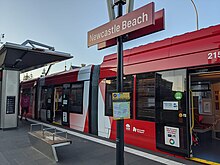
L2 : Randwick Line [ edit ]
- Circular Quay

L3 : Kingsford Line [ edit ]
- Junior Kingsford
NLR: Newcastle Line [ edit ]
Light rail/tram stops [ edit ].
- NLR = Newcastle Light Rail
Metro [ edit ]
Metro stations [ edit ], coach [ edit ], respect [ edit ].
Throughout Australia, including in Sydney, public transit norms (often formally codified) encourage younger and healthy people to give up seats to elderly, pregnant, or disabled riders. If you're in good physical health and sharing a crowded bus or train with such a person forced to stand, it's good manners to let them take your seat, particularly if you're sitting close to the exits. If you're such a person yourself, whether to request a seat from a sitting person is a matter for you to consider; keep in mind many disabilities are invisible and a young, apparently healthy looking person might have mobility problems themselves.
Additionally, it is also a disrespect to blast loud music on public transport as well as putting your feet on the seats. If you want to listen to music, plug your headphones in, otherwise, don't blast your music. While swearing and adding a few extra f bombs into sentences is a norm in Australia, it is disrespectful to swear on public transport unless you want others to be xenophobic towards you.
Avoid [ edit ]
It's best to not bring pets on public transport unless they're a guide or a TSA dog. Otherwise, it's considered disrespectful. In some cases, pets may be banned from the service (e.g bus or train).
Resources [ edit ]
Other [ edit ], go next [ edit ].
- Has custom banner
- Has mapframe
- Articles with dead external links
- Has map markers
- Outline topics
- Outline articles
- Public transportation
- Topics in Australia
- Topic articles
- Pages with maps
Navigation menu
Sydney news: Free travel on trains, trams, buses and ferries starts today
live Sydney news: Free travel on trains, trams, buses and ferries starts today
Here's what you need to know this morning.
'Hip pocket relief' for holiday commuters
A dozen days of free public transport begins this morning in a move authorities say will deliver some "hip pocket relief" for commuters during the holidays.
The 12-day initiative covers all services on the Opal network including trains, trams, buses and ferries.
NSW TrainLink regional services and XPT and Xplore bus services are not covered.
Commuters are still required to tap on with their Opal or credit cards throughout the free travel period, which ends at 4am on April 26.
NSW Transport Minister David Elliott promised the free services as a "thank you" to commuters impacted by industrial action from transport workers.
It came after the Rail, Bus and Tram Union threatened to force the government into offering free rides until July, amid an ongoing industrial dispute.
Howard Collins, Transport for NSW chief operations officer, said the initiative would "encourage people to enjoy what Greater Sydney has to offer, and also provide a boost to businesses".
Cladding clean-up 'inconsistent': report
The office responsible for reviewing Sydney's unsafe building cladding has recommended further action to reach the last few buildings in the city that have not been remediated, in an effort it has called "complex, resource-intensive, and inefficient".
In its findings, the audit says more than 90 per cent of buildings under the Department of Planning and Environment have been cleared, and 1,200 council buildings have also been reviewed and have had safety changes made.
It says most but not all buildings have been reviewed in the last four years.
"The process of clearing buildings with combustible external cladding has been inconsistent," the report said.
"While most high-risk buildings have likely been identified, information management is not sufficiently robust to reliably track all buildings."
It also found that further clarity would be needed about the different cladding products in use, to ensure the buildings remain safe.
Four protesters charged after blocking traffic
Four people who staged an unauthorised protest on the Sydney Harbour Bridge yesterday have been charged.
The climate activists blockaded the bridge with trucks, smoke flares and banners yesterday morning, causing traffic delays.
Two men and two women were arrested and charged.
The activists said they were protesting against the prison sentence handed to fellow protester Andrew George.
George was sentenced to three months behind bars after he interrupted an NRL game at the weekend in protest at environmental destruction.
Historic harbour ferry on the move
The 1912 Sydney ferry the Kanangra will make its way across the harbour today for the next step of its restoration.
Built almost 110 years ago, the vessel is being moved from Garden Island to Rozelle atop a pontoon.
At Rozelle's heritage shipyard its steel hull will be replaced, breathing new life into the veteran of the water.
Kangangra was designed to carry more than 1,000 passengers and was retired in 1985, after serving Sydney for 73 years.
The ferry has been in the care of the Sydney Heritage Fleet since 1987.
It will be escorted to Rozelle bay by the 1874 barque James Craig and 1902 steam tug the Waratah.
- X (formerly Twitter)
- Activism and Lobbying
- Environmental Policy
- Urban Development and Planning
- ✅ Moving Checklist
- 💰 Free Money Transfers
- 📦 Shipping Quotes
- 📚 Relocation Resources

- Should You Move?
- Moving Expenses List
- Arrival Expenses
- Shipping Quotes
- Australian Quarantine
- Australian Customs
- Cost of Living
- Transferring Money
- Opening Bank Account
- Taxes for Expats
- Schools in Sydney
- Daycare & Preschools
- Pet-Friendly Rentals
- Australian Resumes
- Salaries in Sydney
- Residency Visas
- Sponsored Visas
- Work Holiday Visas
- Renting in Sydney
- Sydney Suburbs
- Health Insurance
Select Page
What You Need to Know About Sydney’s Public Transport Before You Arrive
Posted by Lauren | Expat Life in Sydney

Table of Contents
Quick Overview of Sydney Public Transportation
Being a major metropolitan city there is no shortage of ways to get around the beautiful Australian city of Sydney; whether by boat, car, train, or the newly planned light rail system (still under construction at the time of writing). The majority of residents living in and around Sydney consider public transport services to be on time and reliable for the most part. However, what most don’t realize is that a complex system of fares has sprung up around Sydney’s public transport system, and if you don’t know how to use it effectively you could be paying more for a trek around Sydney than you should, but things are getting easier.
What you need to know about Sydney's Opal Card.
Fortunately, the introduction of what can only be described as a smart card for Sydney travel has made traveling Sydney and its surroundings comparatively easier. Tracking down a smart card for yourself – official name Opal Card – may be more difficult than you expect as the usual suspects of supply such as railway stations, bus stops, and ferry terminals may not stock them.
However, you can purchase an Opal Card at Sydney Airport, Central Railway Station, various retailers around Sydney, or order it online. Purchasing online will mean a wait of up to two weeks for delivery (and even longer if you are overseas).
Topping up may also be somewhat problematic, but by far the best way is to do it online whenever it’s convenient. There are also various Opal Card stations such as newsagents, cafes, and other retailers where you can top us as well – just look out for the signage to find them.
The minimum top-up amount at a physical location is $10.00. This is bumped to $40.00 if you are funding your card online. It’s also nice to know that kids under four travel free and from the age of four to 15 a child’s fare applies. After age 16 the adult fare finally takes effect. Pensioners can find relief with half the adult fare that is capped at $2.50 for the day, regardless of how much you travel, but you do need to hold a valid pensioner or senior card.
Normal Opal Card charges top out at $15.00 for the day ($7.50 for children) and $60 for the week. ($30.00 for concession). Having the card is extremely convenient as you can use it on just about every public travel service around Sydney including bus, train, ferry, and light rail. Be aware that special event buses are exempt from concessions.
If you compare the Opal Card to the MyMulti ticket system, then it presents extremely good value. A top daily charge on the MyMulti will set you back $23 while the Opal tops out at $15.00 – a savings of $8.00. And if you transfer within 60 minutes from bus to bus or ferry to ferry the Opal card works out cheaper than a single Travel Ten ticket. However, it has to be the same mode of travel – you can’t go from bus to ferry for instance.
You can purchase single-trip tickets through Opal for the train, ferry, light rail, and bus within the Opal network but these are not available as return trips. Purchase your single trip ticket at most train stations using Eftpos, Visa, MasterCard, or cash (depending on location).
There are four types of Opal Cards currently available:
- Black for adults over 16
- Green for children (4 to 15 years)
- Gold (senior and pensioner card holders)
- Silver (tertiary students and job seekers)
Traveling with animals on Sydney's public transport.
Please note that only assistance animals, police dogs, and security dogs are allowed on Sydney’s train system – no other animals are permitted. It is possible to travel with a pet on Sydney’s ferries if the animal is contained within a box, basket, or another suitable container at all times. Animals may be allowed on buses provided you have permission from the bus driver, the animal is suitably contained or confined, and does not interfere with the comfort of the other passengers.
Trains in Sydney.
Sydney’s rail network is quite extensive – reaching Bondi Junction in the east, Penrith and Richmond in the west, Berowra in the north, and the Royal National Park in the south which also includes Campbelltown. Travelers to the west will be able to get to Lithgow and the Blue Mountains. Southbound travelers can get to Wollongong and Nowra, while northbound travelers can reach as far as the Central Coast, Newcastle, and the Hunter Valley.
There are also regular train services to all of the main inner-city stations, starting at Central Station and traveling through Town Hall, Wynyard, Circular Quay, St James, and the Museum before returning back to Central. The Eastern Suburbs line is where you will find Martin Place station, in the middle of the City Circle service. All travelers in Sydney can use an Opal card; simply tap on when you board and tap off when you depart. It’s also worth noting that Sydney trains are all double-decked to provide greater capacity for seating.
Trains stop operating in the Sydney area from midnight to 4.30 am.
Buses in Sydney.
The first thing of note for the Sydney Bus Service is that between the hours of 7.00 am to 7.00 pm in the CBD it is strictly a pre-pay service. The brave and the bold can pre-purchase tickets at 7/11 convenience stores if they can make sense of the section ticketing system, but the best bet is to have an Opal card at the ready. This is especially true if you plan to make regular use of the Sydney bus service and enjoy traipsing around Sydney’s many metropolitan pockets – a mode of travel made much easier and more cost-effective with your Opal card on hand.
Inner-city buses are quite frequent and stop between every 5 to 15 minutes. Outer suburbs are not so lucky as you may have to wait up to an hour between services – so planning your trips is necessary. Also, be aware that buses with X or L in the number may be express buses and are likely to shoot by your stop if you aren’t paying attention. Always check with the driver to make sure you can be dropped off as expected.
For people who like to party all night, there are many bus routes available during the wee hours of the morning, with Sydney train services being replaced by NightRide bus services departing from Town Hall Station, Central Station, and Kings Cross. These buses cover the majority of train stations throughout the metropolitan area.
Taking the ferry in Sydney.
One of Sydney’s standout features is the gorgeous Sydney Harbour, and all it takes to enjoy this grand vista is to hop on one of the many ferries toing and froing across the harbor. The Sydney Ferry Service is a popular attraction and carries more than 14 million people on its decks every year.
It's also quite comprehensive in its coverage of the bay as it stretches over 37 km from Manly to Parramatta. Unfortunately, you can’t get to Bondi Beach via Ferry as they operate solely within the confines of the Harbour. However, you can get to many of Sydney’s other major attractions on a ferry such as Taronga Zoo, Darling Harbour, Watsons Bay, Manly Beach, and Luna Park. Just make your way to Circular Quay, as this is where all of Sydney’s ferries disembark.
Ferries to the west of Circular Quay are accessible via Darling Harbor but there are two wharves – one at the Aquarium, and the other at King St Wharf. Pay attention to the timetable and make sure you go to the right one as they are only separated by 50 meters.
Trams (Light Rail) in Sydney.
There is a tram system that runs through Sydney to Chinatown, Haymarket, Darling Harbour, Star City Hotel & Casino, and also passing by the Sydney Fish Markets. From there you continue through to the inner city suburbs of Glebe, Lilyfield to Dulwich Hill, and Annandale. It’s also possible to travel via this service using an Opal card.
An exciting new development for Sydney’s transport infrastructure is the construction of the new Sydney Light Rail. This new transport system has been designed from the ground up to make it simple and convenient for travelers getting around the inner city area. It’s going to be a 12km route with 19 stops, starting at Circular Quay and traveling along George St to Central Station, then on to Surry Hills and Moore Park, Kensington, and Kingsford via Anzac Parade, and then on to Randwick via Alison Road and High Street.
At peak times the service is expected to operate at a frequency of every four minutes with a high seating capacity and reliable services. During special events, extra services are expected to be incorporated to take up the load. Socialites will no doubt be excited about the new dining opportunities opening between Hunter and Bathurst Streets along George St. It’s envisioned that this will be an entertainment capital of Sydney with planned creative spaces and outdoor entertainment. The first Light Rail tracks were laid on 11 August this year, so construction is well underway, with the service expected to be taking its first passengers in 2019.
Safety and night travel on Sydney's public transport.
Between the hours of 3.00 pm and 6.00 am there are high visibility police officers and plainclothes officers patrolling stops as well as trains, buses, ferries, and light rail services. There is also a network of 10,000 CCTV cameras to provide further safety to travelers.
Some tips for traveling safely at night include using well-lit roads and walkways, standing in a brightly lit area while waiting on a platform near a CCTV or emergency help point, and sitting close to the guard’s compartment (indicated by a blue light). Also, try to sit near other passengers to avoid becoming too isolated.
Surfboards and bikes on Sydney public transport.
If you are using an Opal card, you can take your bike on any Sydney or Intercity train for free. Ticket holders can only take bikes on board during weekend travel or they can pay a child’s fare for the bike during peak hours. It’s possible to take surfboards on trains but only if they are not going to disrupt other passengers – so peak hour travel with your board is not recommended.
Buses do not allow bikes on board but surfboards are okay if they are not going to disrupt the other passengers in any way. Bus drivers have the final say over whether a surfboard can come on board.
Bicycles are welcome on ferries at all times without charge but the crew may deny allowing a bicycle on board if they deem it a risk in any way, or there is not enough room to stow it. A few private ferries may charge to bring a bike on board.
Student travel on Sydney's public transport.
Students can travel to and from school using regular public transport but there are also dedicated school services operated by local bus companies, so this may be a better option in many cases.
A School Opal card is available for travel between home and school via trains, buses, and ferries which lie within the Opal network and is free from school to home during specific times. Apply for a School Opal card at the transport NSW site. School travel outside of the Opal network is also free if students are carrying a school travel pass.
Getting to and from Sydney's airport on public transport.
Getting to and from Sydney Airport is a breeze by train as it is just a 13-minute ride from the city. Train stations are located at both the Domestic and International terminals.
Opal Card Fares from the Domestic and International Airport
The Sydney Domestic Airport Station to any of the City Stations, or Kings Cross, a single adult one-way ticket off-peak hours is $15.76, during peak hours it is $16.78. From Sydney's International Airport Station to any of the City Stations, or Kings Cross, a single adult one-way ticket off-peak hours is $16.34, during peak hours it is 17.60.
*Peak hours are 7am – 9am and 4pm – 6:30pm
Opal Single Ticket from the Domestic and International Airport is $18.20.
Bus Route 400, located between Bondi Junction and Burwood, stops at the International (T1) and Domestic Terminals (T3). There are also clearly marked terminals for bus stops located at the arrivals level. To estimate the fare and for timetables go to the Sydney Buses website .
What Are You Shipping to Sydney When You Move?
Do you know yet.
The truth is you don’t need to know right now, for sure, what’s going with you.
But you have to get your shipping quote ASAP, especially now.
Why? Because international shipping companies need to schedule your shipment to Australia far in advance, some ask for 6 months in advance . Yes, COVID has changed everything, including international shipping .
When filling out the contact form below…
- You don’t need a street address for where you’re moving to, only the city and country. What they really want to know is the major shipping port.
- You don’t need exact dates right now. Go with your best guess.
- Studio or 1 Bedroom —> 20 m3
- 2 Bedroom —> 25 m3
- 3 Bedroom —> 30 m3
- 4 Bedroom or 3 Bedroom + Car —> 50 m3
- Use your “real” contact details for BOTH phone and email. Yes, the form is secure. If you don’t use your real contact details, then they can’t get in touch with you for your quote. Makes sense, right?
International Movers Contact Form
⏱️ Give the form a second to load.
About The Author
Hi, I’m Lauren, and I've helped thousands of people from all over the world move to Australia since starting my blog back in 2009. You can read more about me here , but Sydney Moving Guide isn't about me. IT'S ABOUT YOU. So, I have one question for you. How can I help you with your move to Australia? Let me know in the comments below and don't forget to grab my moving checklist before you go .
Related Posts

Top 25 Cheap Eats in Sydney: Prices, Hours, and What to Order
December 27, 2019

What You Need to Know About Bugs in Australian Households
December 4, 2019

101 Sydney Facts That Will Surprise You
May 14, 2017

Five Wine Bars in Sydney Every Wine Lover Must Try
December 23, 2019
Moving Checklist PDF

Free Money Transfers

Sydney Shipping Quotes

Recent Posts
- Median Rents in Sydney by Neighborhood and Number of Bedrooms Expat Money
- Wondering How Much It Costs to Move to Sydney? 10 Things You Should Know Before Moving to Sydney
- You Can’t Rent in Australia Without 100 Points of ID and These Documents Real Estate & Renting
- Expat’s Guide to Currency Exchange and Transferring Money Overseas Expat Money
- Do You Owe Tax on Money You Transfer to Australia? Expat Money
- Opening Your Bank Account in Sydney Before You Move Expat Money
- Playgroups in Sydney for Families with Young Children Moving with Kids
Visitor's guide to Sydney Transport Fares and the Opal Card
Your guide to the best Sydney Transport Fare options for visitors including how to obtain and use the new Opal Card

When it comes to Sydney Transport fares, things have gotten a lot easier thanks to the reloadable Opal card. It is your best fare payment option unless you plan to make just a few short trips in which case you can purchase single trip Opal tickets. The Opal card is now fully implemented and offers the lowest rates and most convenience on all modes of public transport in Sydney.
Public Transport in Sydney consists of multiple modes including Trains , Buses and Ferries which are overseen by Transport for NSW and Sydney Light Rail overseen by Transdev Sydney. The Opal card covers all of the above services which is how we wish all public transit systems worked as it makes getting around much simpler.
The minimum balance you can put on the Opal card is $10 for an adult card and $5 for a child card. You can top up your card in increments of $10, but don't get too carried away as you don't want to be left we a large unused balance at the end of your trip or risk loosing a card with a large balance. You can apply for a refund of your unused balance, but that has to be done via mail.
Opal Card Benefits
With the Opal card you are only charged for the trips you make up to a maximum daily or weekly cap. Once you have an Opal card and load it up, you don't have to keep queuing up to buy tickets for each trip. You can even order the card from the Opal website (see below) and have it delivered to your residence before you travel.
Contactless Payment Methods
In addition to paying with the Opal card, Adults can use any contactless payment card (credit or debit) or a device equipped for contactless payments to tap in and out from their trips. For adult fares, by using the same payment card for every trip, you will receive the same benefits, caps and rates as you get with the Opal Card. This makes contactless payment a convenient option, but each rider must have their own payment type (card). If not, you should consider using the Opal Card.
Off Peak Times and Fares
During weekends, holidays and non peak hours on weekdays riders receive a 30% discount on Train, Bus and Light Rail services when using an Opal Card or contactless payment method. Non peak hours on weekdays are between 10am and 3pm and again after 7pm in the evening.
Sydney Transit Fare Table
The table below shows the most common fares for the new Opal Card and train tickets from Sydney Airport. All amounts are in Australian Dollars and are subject to change without notice.
Where to Buy
Opal Cards: Opal cards can be purchased at both the Domestic and International Airport Stations as well as from a wide range of outlets throughout Sydney. These include most convenience stores including 7-Elevens and independant newsstands located throughout Sydney as seen on Opal Card website .
Opal Tickets: Opal tickets can be be purchased at any Train station ticket vending machine, but they are only available for single trips (one way or round). Price is based on distance travelled and will cost more than using an Opal card.
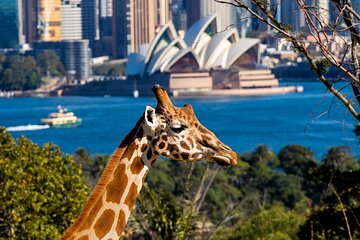
- See the complete line of Sydney Experiences on Viator
More Info for Getting Around Sydney on Public Transportation
- Sydney Ferries
- Airport Transportation
- Real Time Transit Alerts
- Transit Tips

Getting Around Sydney
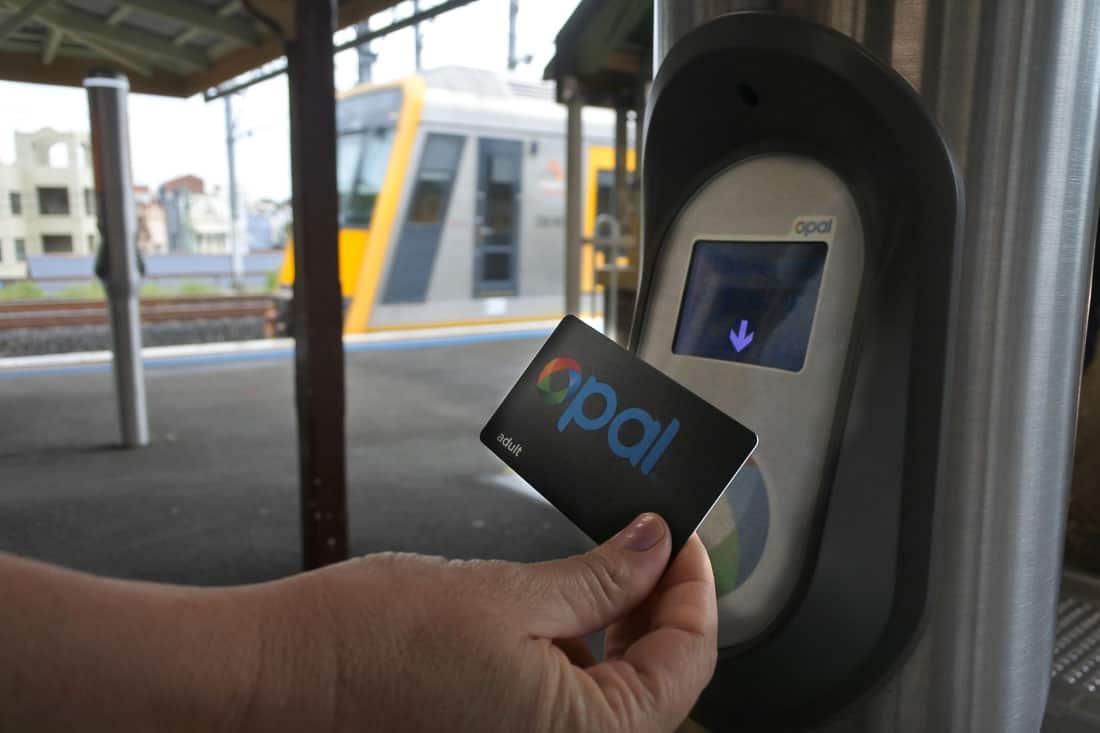
Sydney is a fabulous place to take the kids, whether for a weekend or a week. There is so much to do and overall, getting around Sydney is relatively easy.
To help you plan how best to get around all the tourist attractions in Sydney, we’ve put together this Sydney getting around guide. We detail all the ways of getting around in Sydney, including tips on how to get to and from the Sydney airport.
Talk to other families about their tips on visiting Sydney and join our Thrifty Family Travel Facebook Group or get inspired by our Instagram .
This post may contain compensated links. Please refer to my disclaimer here for more information.
Page Contents
- 1.1 Walking in Sydney
- 1.2.1 Train
- 1.2.2 Light Rail
- 1.2.3 Ferry
- 1.2.5 How much?
- 1.2.6 How to pay?
- 1.2.7 How to plan?
- 1.3 Rideshare and Taxis
- 1.4 Hop on Hop Off Buses
- 1.5 Renting a Car
- 2.1 Rideshare or Taxi
- 2.2 Public Transport
- 2.3 Private Shuttles
- 2.4 Rent a Car
Getting Around Sydney
Let’s jump straight into it and help you decide the best way to travel around Sydney with the kids.
Walking in Sydney
The great news is the best way to get around Sydney is often by walking. You can easily walk around to most of the tourist attractions within the Sydney city centre. From one end of Sydney to the other, it should take you no more than 30 to 40 minutes.
Of course, when travelling with young children, sometimes walking 40 minutes is just not feasible. Or if you’re limited on time, you may need to find a quicker mode of transport.
Public Transport in Sydney
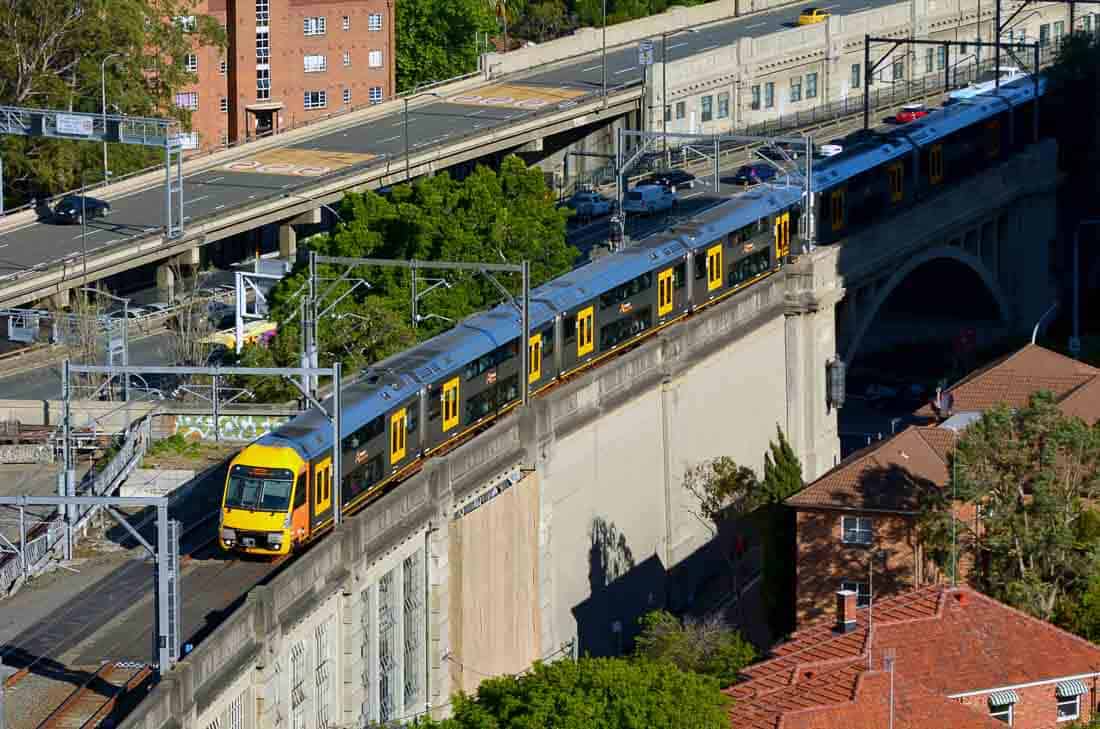
You’ll likely want to take public transport at least a few times during your time in Sydney. In Sydney, public transportation include buses, ferries, trains and light rail.
In the CBD, the train network is called the City Circle, which as the name suggests, runs a loop around the city. The stops include Central, Museum, St James, Town Hall, Wynard, Circular Quay and Martin Place.
In addition to the City Circle, there are other trains, called light rail, that take you around the city centre. There are three main lines – Central Station to Dulwich Hill (L1) (best for Chinatown, Darling Harbour, and Pyrmont), Circular Quay to Randwick (L2) and Circular Quay to Kingsford (L3).
For those travelling along the water’s edge, the ferry routes Sydney offers provide a convenient method of transport and make for a pleasant experience.
The ferry is usually the best transport for those wanting to get between Circular Quay and Darling Harbour, Luna Park, Manly and Taronga Zoo.
If you want to take public transport anywhere else that the trains, ferries or light rail don’t go, you’ll need to take the bus. The network of bus transport Sydney has is comprehensive, making it easy to get anywhere you need to go across the city.

Each trip around the city with Sydney public transport will cost you between $3-$7. The good news is that once you spend $16.80 in a day, your remaining trips are free.
Getting around Sydney by public transport on weekends and public holidays is even better, as after you’ve spent $8.40, your remaining trips are free!
Just note that the Airport train isn’t included in the public transport in Sydney travel caps.
You’ll also get a $2 discount for transfers (catching another mode of public transport Sydney offers within 60 minutes).
Children pay half the price of an adult fare and their travel caps are also half that of the caps mentioned above. Children under 3 travel for free.
It’s worth noting that getting around Sydney on public transport is much cheaper with buses and trains than by ferry.
How to pay?
Local transport in Sydney uses an Opal card, which you preload with cash. Opal cards can be purchased at a range of newsagents, post offices, convenience stores and supermarkets, as well as when you arrive at the domestic and international airport terminal stations.
You can also top up at these places or at top up machines which are generally located at train stations.
Opal cards are free, but you will need to buy one with at least $10 loaded onto it for adults and $5 for kids.
A great alternative to an Opal card when getting around in Sydney by public transport is simply to use a contactless-enabled credit or debit card or a linked device.
The only thing to consider though is that every family member will need to use a separate card. Also, you will be charged the adult fare rate, so you’re better off getting an Opal card, at least for the kids.
How to plan?
The best way to plan how to get around Sydney by public transport is with Google Maps or the NSW Trip Planner. While Google Maps is fine, I prefer to use the NSW Trip Planner initially as it will show you the cost of your trip and that way, you can decide if it’s just as cheap to take a rideshare.
If you decide to go ahead with public transport, I then prefer to use Google Maps, as it makes it very easy to determine not only the best method of public transport for your journey but also exactly where you need to be and at what time you need to be there.
Rideshare and Taxis
While you may think public transportation in Sydney would be the cheapest option for a family, quite often, rideshare is more affordable or if not cheaper, just a few dollars more. Considering the convenience of rideshare, it is generally my preferred method of getting around Sydney without a car when travelling as a family.
I recommend that for each journey you plan on taking across the city, make a quick comparison between Uber and the NSW Trip Planner apps and compare the difference in prices.
Taxis are another option, but I find rideshare apps super convenient and much cheaper these days.
Hop on Hop Off Buses
Another convenient way of getting around Sydney is on the Hop on Hop off buses.
I’m not usually a huge fan of these buses, as the routes are fairly limited, buses are few and far between and passes are not cheap. However, they certainly take the stress away from planning how to get between attractions. You also get commentary along the way.
Keep in mind that the buses only operate in Sydney from Thursday to Monday.
Click here to book your Hop on Hop off bus tickets.
Renting a Car
For those families wishing to visit attractions outside of the city centre, you may consider hiring a car and driving in Sydney . I wouldn’t recommend hiring a car for the entire trip though, only for those days you need a car to travel outside the city centre.
Parking in the city centre is not only expensive but also very limited. By the time you paid for car rental, petrol and parking, you could have saved some cash by using rideshare to get around the city.
The other thing to consider for those renting a car is tolls. There are several toll roads in and around Sydney. Of course, you can use Google to map out a route that doesn’t include tolls, but this may add quite a bit of time to your trip.
Getting from Sydney Airport to the City Centre
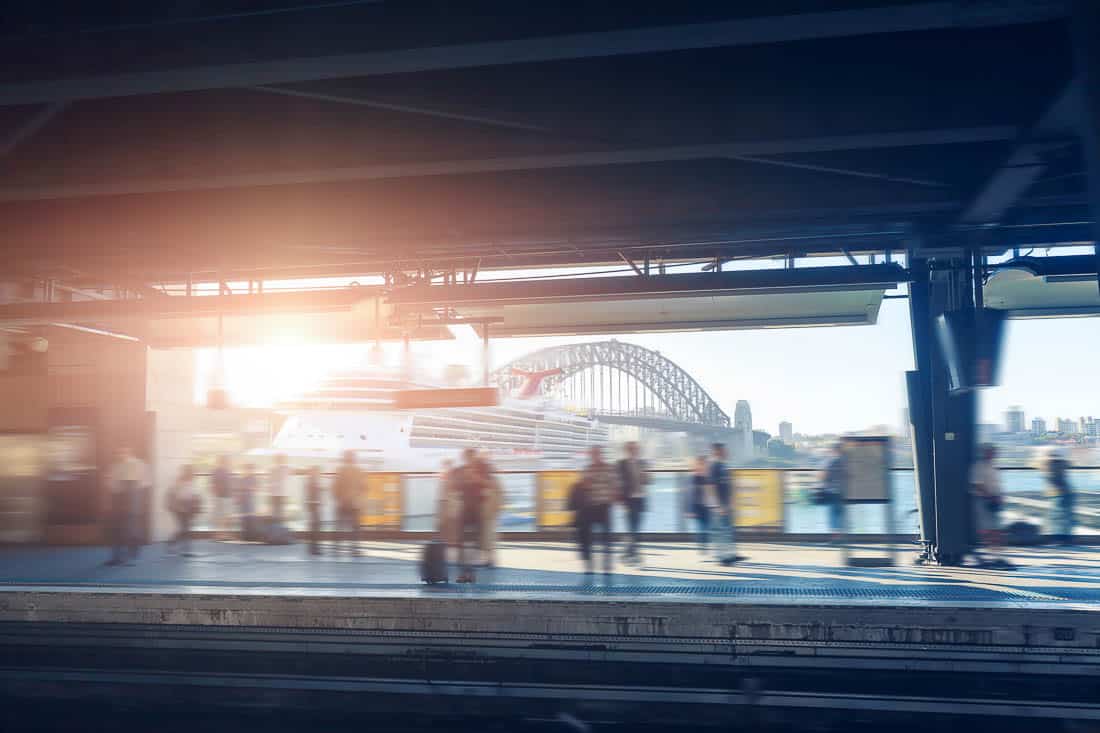
The distance from Sydney Airport to the city centre is just 10 to 15 km, depending on the location of your hotel. By car, the journey from Sydney Airport to Downtown can take as little as 20 minutes in light traffic or as long as 45 minutes in peak hour.
To help you decide the best way to travel from Sydney Airport to Sydney City, we’ve provided all the different transport options below.
Click here for our more detailed guide on getting from the Sydney Airport to the City Centre.
Rideshare or Taxi

Often the best way to get from the airport to your hotel is to use a rideshare app such as Uber. You can expect to pay around $35 to $60 with Uber depending on the location of your hotel, time of day and traffic.
For those taking an Uber, you will need to meet your driver at the Priority Pick Up Point. The Priority Pick Up Points are just a short walk from the International or Domestic Terminals. Just look for the signs as you exit from the baggage claim area.
If you prefer you can also take a taxi from outside the arrival hall of each terminal. However, expect to pay much more for a taxi at around $50 to $90, depending on the location of your hotel, time of day and traffic.
The benefit of taking an Uber or a taxi is you’ll be taken straight to your hotel, and there is no messing about with getting luggage and kids on and off public transport.
Public Transport

With a couple of kids and all your luggage, it’s really not worth getting public transport to or from the airport to Sydney. When you buy train tickets for everyone, there won’t be much difference in the cost of an Uber. The bus is cheap but long with around an hour of travel time.
If you wish to take the train, it takes around 20 to 30 minutes, and trains come very frequently every 15 minutes or so between 4.30 am and 1 am.
The Airport train is not cheap though, costing $19.53 per adult and $15.97 per child during peak hours and $18.39 per adult and $15.41 per child in non peak times.
Buses are cheap at $2.65 per adult and $1.32 per child, but it does take almost an hour to get into the city. They do run fairly regularly though, from outside the arrivals level of both the international and domestic terminals.
If you decide to take the train or bus from the airport to the city, you can pay with your credit card by tapping on and off (you’ll need a separate card per person) or with an Opal Card, which is Sydney’s public transport card. Opal Cards are available at Newslink or WH Smith bookshops at the International or domestic terminals and the airport train station.
To plan your trip by bus or train, use the NSW Trip Planner.
Private Shuttles
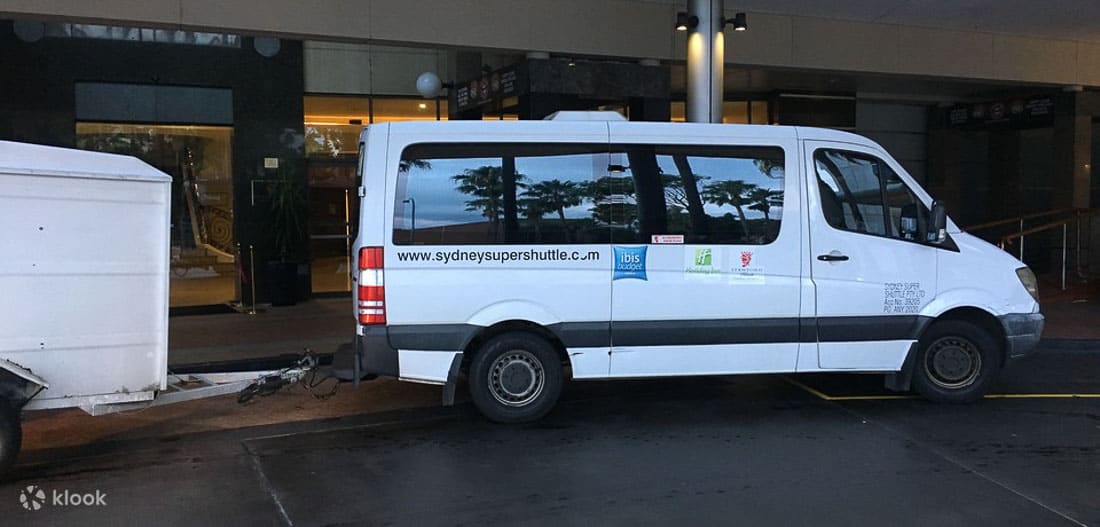
If you’d like to have someone prearranged to either take you to the airport or to be there waiting for you when you land, you can book a private shuttle. This is often a good idea for families of more than 4 people or those that require car seats.
You can prebook a shared shuttle with ConXion at the rate of $29 per person or with Sydney Super Shuttle at the rate of $10 per person. Both shuttles will take you directly to your Sydney hotel.
If you have pre-booked one of these shuttles, follow the signs to the Redy2go desk after you pick up your baggage, which is in the arrival halls of both terminal 1 and terminal 2.
If you plan on renting a car while in Sydney, then another option would be to pick up your rental car at the Airport and drive to the hotel.
There are several car rental companies at the Airport. If you’re arriving at the domestic terminal, car rental companies are at terminals 2 and 3 – follow the signs from the arrival level. For those arriving at the International Airport, head to terminal 1, where you’ll find the car rental desks.
____________________________________________________________
Hopefully you’ve found this guide on getting around Sydney helpful. We have other guides to help plan your trip to Sydney, including things to do in Sydney and where to stay in Sydney with kids.
Leave a Comment Cancel reply
Save my name, email, and website in this browser for the next time I comment.
Skip to content
- Decrease text size
- Increase text size

NSW Government - Opal
Get an Opal card
Customer care, opal for visitors.
If you are visiting Sydney and the surrounding regions, an Opal card is the most convenient and affordable way to pay for your fares on public transport. Find out more about Opal for visitors .
Quick links
- Transport Info
- Website Terms
- Opal Terms of Use
- Accessibility
- Website Help
- Get Adobe Reader
- Transport for NSW
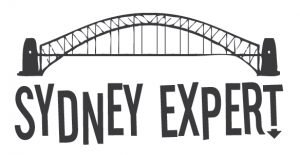
Using Sydney’s Public Transport 2024
There is no need to hire a car for your time in the city. Sydney’s public transport is easy to use, and once you work out the basics, I am sure you will find it convenient. Below is your crash course on how to get around Sydney on your holiday; consider it a brief introduction to using Sydney’s public transport on your holiday.
Sydney Airport Link
Sydney trains – city, blue mountains & more, the best bus routes for visitors to sydney, sydney light rail – servicing the city, east and inner west, sydney ferries, silver service taxis – book online or download the free app, water taxis, transport apps and websites.
For most people, the airport train will be your first taste of Sydney’s Public Transport network. Depending on the time you arrive, this could be a pleasant or pretty stressful experience.
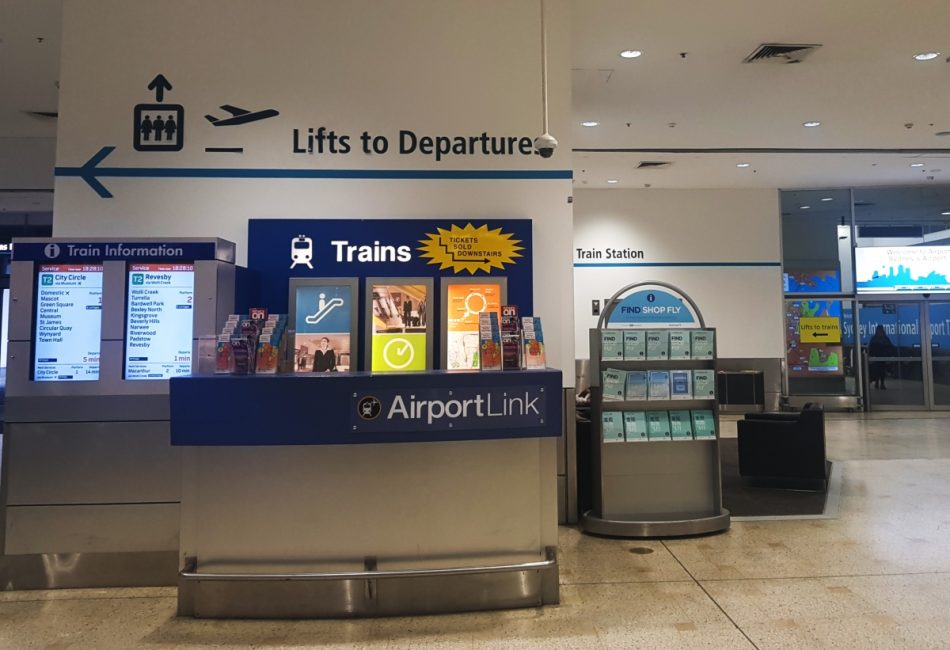
The two stations at the airport are privately operated and, as a result, are relatively expensive. Still, the train journey is cheaper than a cab, especially if only two of you. The trip is also much faster; in busy periods, you can be in the city before you even get to the front of the taxi queue.
Have a read of our airport train tips and decide if it’s right for you.
I used to take this train every day. The trains are pretty crowded in peak hours and not for the faint-hearted. Try to get to the front or rear of the train for more space and, if you can, avoid standing right in the doorway so others can get on. If you have a huge backpack, take it off your back – it’s the polite thing to do:-)
Sydneysiders love to complain about our rail network, and at times it can be a bit crap, but for visitors who mainly access the inner stations, it’s a great way to get around the city.
We have written a detailed guide to Using Sydney’s Opal Card especially for visitors.
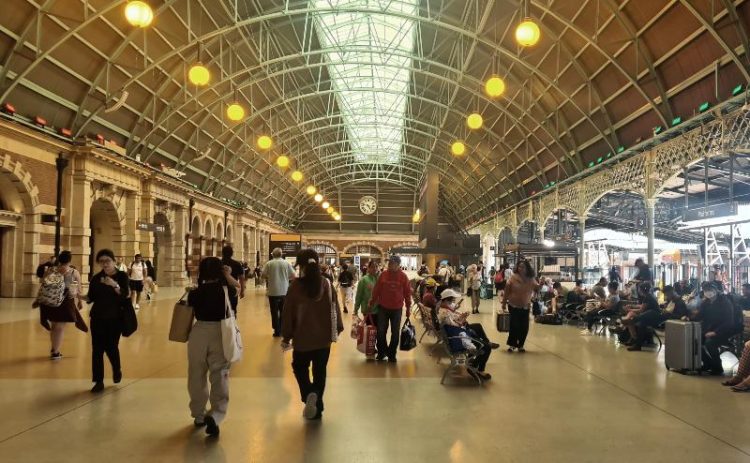
The heart of Sydney’s train network is Central Station, located between Chinatown and Surry Hills. All trains pass through this station; it is also home to country link services that will take you into regional NSW and beyond to Melbourne, Brisbane and even Perth!
If you are planning a train trip to the Blue Mountains , you will probably depart from Central.
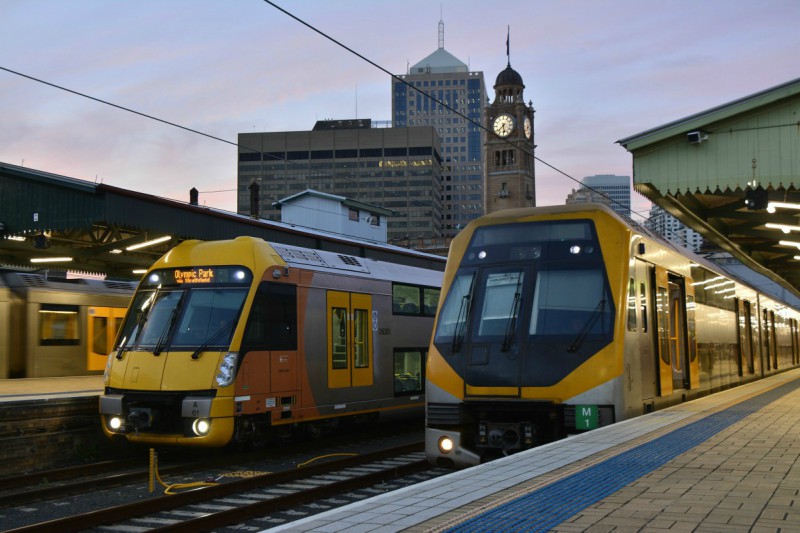
The other key stations for travellers are part of the City Circle, a loop of stations that form a ring around the CBD or central business district. These stations include Central, Town Hall, Wynyard, Circular Quay, St James and Museum. The city circle runs in both directions and is an excellent way to get from one end of town to the other if your feet give up!
The nearest City Circle Stations to main attractions are:
- Central – Paddy’s Market, Chinatown, Surry Hills and Chippendale (Central Park complex)
- Town Hall – QVB, Darling Harbour
- Wynyard – Barangaroo
- Circular Quay – Ferries, Opera House and The Rocks
- St James – Pitt Street Mall, Hyde Park, St Mary’s Cathedral
- Museum – Museum, Hyde Park, William Street to Darlinghurst
A train ride to one of Sydney’s suburbs like Newtown or Cronulla is also an excellent way to spend a few hours exploring a different part of the city.
Sydney Buses – Servicing all areas of Sydney
Sydney buses service most suburban areas and are the only option in many Eastern and Northern suburbs. To ride the bus require you to use an Opal card or contactless payments like Apple or Google pay or a bank/credit card with a chip. You cannot pay with cash.
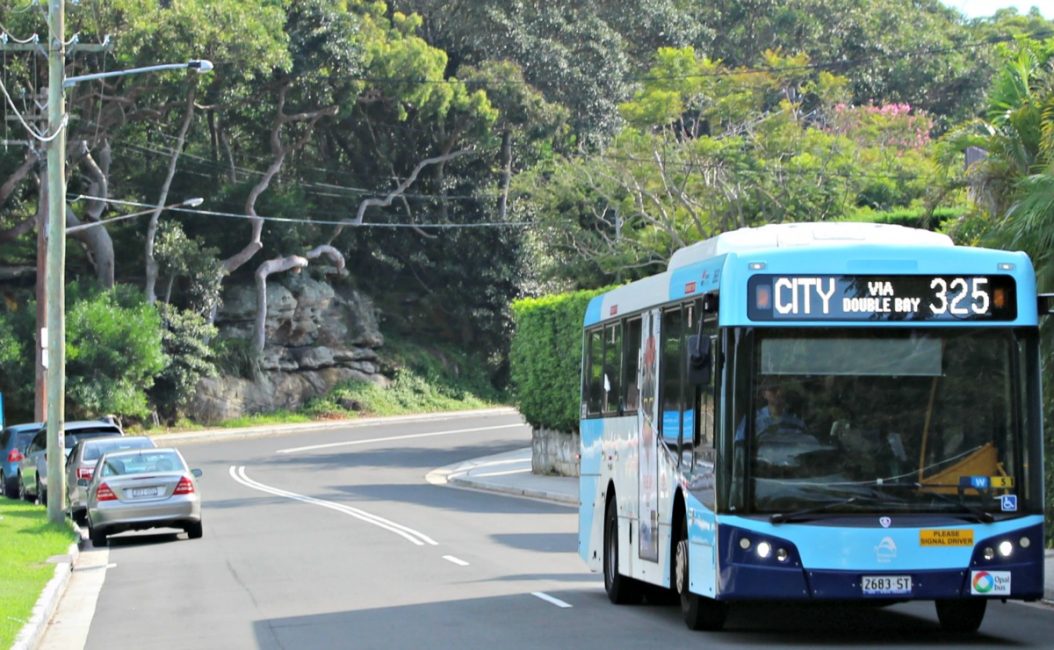
If like me, you enjoy exploring places like a local, you might enjoy our detailed articles about using Sydney buses to discover different parts of the city, including a general one on using public bus routes .
I don’t own a car, and Charles is a bus driver, so we are pretty much experts at Sydney’s bus system. Check out our guides to the following routes:
- 389 bus from Pyrmont to North Bondi ,
- 325 bus from Walsh Bay to Watsons Bay
- 311 for the Barangaroo to Woolloomooloo
Sydney has three light rail lines with all stopping in the city centre. The L1 Route – The original shiny red light rail service travels through the south of the CBD from Central Station to the Star Casino before heading to the inner west. It passes a couple of tourists spots, including the Sydney Casino, Sydney Fish Market and the Tram Sheds, an excellent destination for food lovers.
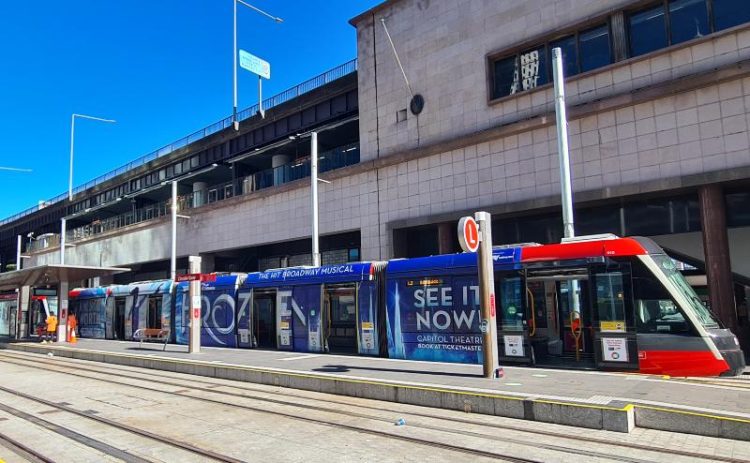
The L2 Route – This line travels from Randwick to Circular Quay. After leaving Circular Quay, the tram travels up George Street via Haymarket to Surry Hills, Moore Park, and Randwick Racecourse.
The L3 Route – Also begins at Central and travels to Kingsford.
There is a range of public and private services operating in Sydney. Both Opal cards and credit cards are accepted, although some of the private services like the Bundeena ferry operate outside the Opal system. At least one ferry ride must be on your itinerary !
Public Ferry Services – There are eight public ferry routes in Sydney covering Manly , the eastern suburbs of Watson’s Bay and Rose Bay, harbour foreshore suburbs of Mosman, Cremorne and inner west and western suburbs ferries to Balmain and Parramatta .
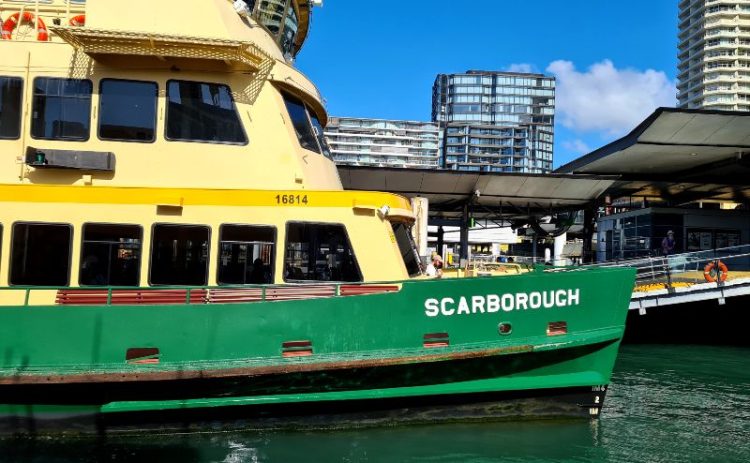
Private Ferry Services – Some harbour services are run by private operators, including Manly Fast Ferry and Captain Cook Cruises. Several small ferries make a fun day out for visitors wanting to escape the city for a day like the Brooklyn River Ferry, Church Point, the Central Coast and the charming Bundeena Ferry.
You can use your Opal card to pay for rides on the Manly Fast Ferry and Captain Cook Cruises, but the trip will not count towards your daily travel cap or weekly cap. It has recently been announced that the Manly Fast Ferry will soon be added to the Opal travel cap so check this if you are planning on traveling to and from Manly.
Check out my thoughts on the best ferry rides for visitors to Sydney .
Rideshare Services and Taxis
Rideshare services are legal in Sydney. I am a big fan and have had many positive experiences using them in Sydney. I took about three trips a week on average over the last year, so I have been in enough to have formed an opinion; all drivers have been overwhelmingly courteous, and they are now my first choice when calling for a ride.
New rideshare services are beginning all the time. The most recent ones are Ola and Didi. Sign up, and you usually get a code offering you a couple of free rides – use them all and save yourself some cash. Ola seems to have all but disappeared to stick with Uber or Didi for the best experience
You can now use any of these rideshare services from Sydney Airport – there are designated pick up areas at both the International and Domestic terminals that are well signposted.
Check out our guide to using Sydney Airport , which includes details of all the airport’s transport options.
There are several taxi companies in Sydney, some service the city and others work in smaller areas. Silver is my personal favourite mainly because they answer the phone quickly, the taxis are clean and best of all they turn up!
It’s worth noting the secure ranks that operate at night if you are travelling alone. These run from 8 pm until 3.30am on Friday and Saturday nights. The most useful ones are:
- Darling Harbour, Northern end of Lime Street
- The Rocks, Northern side of Alfred Street – Circular Quay
- The Rocks, corner of Argyle and Harrington Streets
- Chifley Square, corner of Hunter and Phillip Street
- World Square, Eastern side of George Street between Liverpool Street and Goulburn Stree
H20 Sydney Water Taxis – Sometimes the quickest way to get from one side of the city to the other is by water taxi – Balmain to Mosman, for example, is going to take you ages any other way. They can be pretty cost-effective for groups.
Bayswater Car Rental – An excellent value company with reasonable rates and a convenient city location. I have rented from Bayswater (also known as no birds); it has always been problem-free.
Sydney Trip Planner – Trip planner can be reached via the web or phone 131500. This all in one site will help you find the best way to get from A to B. The site also lists track work and service interruptions, which are frequent in Sydney on the weekends.
Tripview – The paid version of this app is the one I use every day as it lets you save your most used journeys.
I love the free global transport app Citymapper that I think works well in Sydney. It is probably the best option for visitors as it assumes less knowledge of Sydney than most of the other apps and is free.
Got questions about using public transport in Sydney? Head over to our friendly Sydney Expert Facebook group and we will be happy to help.
27 thoughts on “Using Sydney’s Public Transport 2024”
Hi, this is my first time to Sydney, I plan to buy an Opal card in Airport. Not sure if I can cash back unused dollar value (after 4 days) when I leave Sydney
Hi Ricky Unfortunately you cannot easily get a refund on the card. You can fill in a form to get money refunded but it is paid to an Australian bank account and address to do this. See this page for more details. https://www.opal.com.au/en/opal-fares/opal_refunds/
If you are not sure how much to load you can use the fare estimator on the Opal site or send me an email with your itinerary and I will try to work out the best amount for you to load.
Can I pay cash when I get on the bus 400 to Bondi JUnction.
Yes, I recently did so I think you can.
Hi, I will be visiting Sydney in this May, so would it be better to online-purchase the opal card in advance or just purchase the card upon arrival in the WH Smith Sydney International Airport store?
Hi Carmen No need to purchase in advance – just buy it at WH Smith if you don’t want to put a lot of credit on it or the Airport train station counter f you are happy to load it with $35 minimum.
Hi just a bit more info on the opal card…..opal gold for seniors has to be applied for online 2 weeks or 3 before your arrival…it gets sent in the post after receiving your application. Quite ridiculous me-thinks.
Hi All. I live in South Africa and can recommend downloading the app ‘Offline maps and Navigation’ (not available on iPhone/iPad) before embarking on any travels, including Australia. After downloading the app, download the countries offered in the app you intend visiting before leaving and ensure the main cities are included. If works offline and is similar to Google Maps, but without using data. This is great if you embark on a walking or self-drive excursion – it indicates the time of arrival and also the speed limit while you are driving! We chose a hotel just opposite Central Station (for convenience of catching the Sydney Airport Link with 2 large suitcases and a trolly suitcase) and found it a relatively comfortable walk to Darling Harbour, the Rocks and Opera House. We enjoyed a lovely (reasonably priced) ham&cheese croissant breakfast with flat white coffee included @Oliver Brown Belgian Chocolate Cafe on Quay St. Paddy’s Markets (and the food court upstairs) is also worth a visit, as well as the Queen Victoria Building with its lovely interior – and a fresh juice at one of the cafe’s inside. When visiting the Botanical Gardens, take a small packet of fresh almonds or other nuts/seeds to feed the cockatoos – they are so tame and will sit on your shoulder or arm and eat out of your hand. Also look up into the trees for the huge fruit bats hanging from the branches. For bird-lovers, take a small pair of binoculars – you will be glad! We did not buy Opal Cards, but at the end of our 3-night stay did a day-trip on the Hop-on Hop-off bus (be sure to take a pair of earphones when you enter the bus at the front so that you can recognise the different landmarks) – it was well worth it to visit the areas further afield like Bondi Beach. Remember the sunscreen and hat! The Sydney Fish Market was a bit of a disappointment, but maybe we were just not in the mood. So try it and form your own opinion. Thank you for well put-together info on Sydney and surrounds.
it was very helpful
Hi there, seek for advice. My family and I (9 people) will be in Sydney in November for 5 days. in our itinerary Bluemountain, Bondi Beach, Featherdale zoo so which type of card i should buy. thank you
Hi Lin you will all need Opal cards if you are planning to take Public Transport. Feel free to message me or join our group for specific information.
Hi Please advise. I arrive on 6 November 2019 for 4 days staying at George Street,Haymarket On 7 November 2019 I need to be at Royal Alfred Hospital at 1pm.
Please suggest transport I can use to the hospital and to return to George Street.
I also require suggestion for return economical transport to the airport.
Hi Raymond This is a really easy short trip. Choose one of the following buses, 423/426/428/L23/L28. You can join the bus on George Street near Central Station mostly likely from Stand M. The trip takes 34 minutes.
Hi! Best and cheapest way for 2 people to get to the rocks area from the airport?
Also, best and cheapest way to get to Hillsong Hills campus from the rocks area?
Thanks so much! Very helpful site 🙂
Google maps in Sydney has transport information and might be the best way to work out the route to Hillsong as it will depend on the time of day. The Rocks is easily reached by train from the airport. Get off at Circular Quay if in a hotel on George Street and Wynyard for the Shangri la or Quay Apartments.
Hi, Love your site! Find it very educational and informative. We are seniors (73 n 76 yo) from the Philippines and will be visiting Sydney for the first time on Nov 24 till Dec 4. What is the best option for us to get to our hotel from the Sydney Int’l airport to Bayswater Sydney hotel? We are arriving 10am Nov 24, 2019. Also, is it more economical for us to buy the package tour offers for City bus tour and ferry cruise tours rather than taking d public transports on our own? Will highly appreciate your reply. Thank you.
Hi Romy, Your hotel is a good 10 minute walk from Kings Cross Station so given the cost of two train tickets I would probably suggest a shuttle or rideshare service. If you are travelling on a budget then get an Opal card and load $30 on it and use public transport to explore the harbour and the city. You can take buses or trains to most of the main sites. If you like using the HOHO bus for them commentary I have written a post on Sydney’s bus with some tips to make the most of your time here https://sydneyexpert.com/hop-on-hop-off-bus-sydney/ We have also written a similar guide to using public transport to cover a similar route https://sydneyexpert.com/self-guided-sydney-bus-tour/
Hi Paula, great guide to Sydney’s public transport. Just a friendly suggestion, it may help to link through to your Opal Card “How-To” from this page, as I didn’t realise you had it on another page when I was looking for it. Or maybe I just missed it here. Either way, thanks for the info!
Fantastic suggestion! I can’t believe we missed it. Thanks for letting us know 🙂
Thank you so much for your help!
Your site is very helpful. I am trying to confirm train times from Central Station to Gosford on the Central Coast & Newcastle Line for New Year’s Eve after the show ends (either 10 pm or 1 am). All the online schedules show no trains. I cannot seem to find the schedule for New Year’s Eve. Do you know where I can find that?
Trains will run all through the night on NYE. The timetable may not appear until December.
Hi, I am glad to find your site, the info is great. Would you mind suggesting any suitable transport which I could take from the airport if I wish to travel to ANZ stadium for an event??
Hi CHaerin, Glad you found it helpful – I suggest you jump on the train to Central Station and change to an Olympic Park Station. For large events, they have dedicated trains to Olympic Park. Otherwise, you take a train to Lidcombe and change to the Olympic Park train. It’s much more straightforward than it sounds.
Hi, this article is very useful for first timers to Sydney. Would like to ask if the train and bus services open as usual on xmas and boxing days? Thank you
Hi Ping, Public transport is available every day of the year. On Xmas day and Boxing day they use the Sunday or Public Holiday timetable which sees fewer services per hour but you will still be able to find plenty of ways to get around.
Hi there, thanks for the reply. May I ask if the public transport to places like hunter valley follows the same as what you have suggested? And if opal card is used or separate tickets need to be purchased? Thank you.
Comments are closed.
Current students
- Staff intranet
- Find an event
Travel concessions
As a student at the University you may be eligible to apply for a travel concession, giving you cheaper public transport fares.
Eligibility
Transport for NSW determine the eligibility for travel concessions .
Generally you are eligible if you are a:
- full-time enrolled student (18 credit points or more each semester)
- Australian citizen or permanent resident
- student with a NSW home address.
If you are enrolled in an exchange program where you pay your tuition fees to your home institution, you may also be eligible for a travel concession.
All other international students and New Zealand citizens are generally not eligible for transport concessions. Instead you’ll need to purchase an Adult Opal card for travel in the NSW Opal network.
In some circumstances, Australian Government scholarships entitle you to a transport concession. Find out if you’re eligible on the Transport for NSW website .
If you have a medical condition or disability which prevents you from being able to enrol in full time study, you may be eligible to register with the University’s Inclusion and Disability Services , where approval for a transport concession can be reviewed. Please note that eligible students must be domestic and engaged in part-time study due to the impacts of their disability.
How to apply
During the enrolment task you will be asked to give consent for us to share your details with Transport for NSW. You will need to do this each time you re-enrol in your course.
You can also provide your consent at any time through Sydney Student (go to 'My details, 'Personal details').
Allow two business days for this information to reach Transport for NSW.
You’ll then need to apply for a Concession Opal card .
Once your eligibility is confirmed your Concession Opal card will be mailed to you within 5-7 working days.
When you have a Concession Opal card, you need to carry your student card with you as proof of your Concession Opal entitlement.
Apply for a Concession Opal Card
Have a question, i have been advised that my opal concession card will be blocked and need to check my eligibility.
Check your eligibility for Concession Opal Card
Related links
- Transport for NSW
- Student cards
Student Centre
- Ask a question online
- Check your open enquiries
1800 SYD UNI (1800 793 864) or +61 2 8627 1444 (outside Australia)
Find out more about how we can help
- Website feedback
Your feedback has been sent.
Sorry there was a problem sending your feedback. Please try again
You should only use this form to send feedback about the content on this webpage – we will not respond to other enquiries made through this form. If you have an enquiry or need help with something else such as your enrolment, course etc you can contact the Student Centre.
- Find an expert
- Media contacts
Student links
- How to log in to University systems
- Class timetables
- Our Rankings
- Faculties and schools
- Research centres
- Campus locations
- Find a staff member
- Careers at Sydney
- Emergencies and personal safety

- Accessibility
How can we help you today?
Popular searches.
- Contactless payments
- Routes and timetables
- Concessions
- School student travel
- Opal Travel app
Tickets and Opal
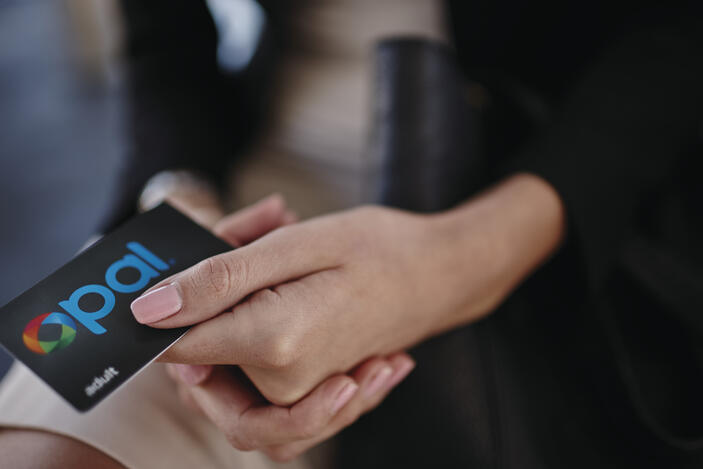
Sydney and surrounds
To pay your fare, you can use an Opal card or a contactless payment. If needed, Opal single tickets can be purchased at selected stations and stops.
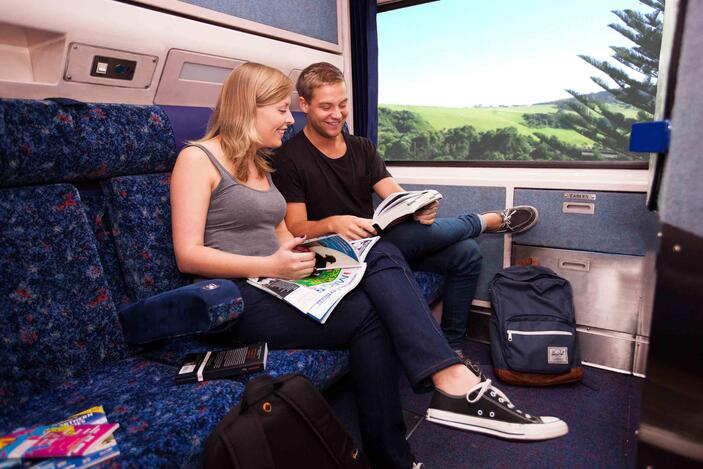
Regional tickets and fares
You need to book your seat in advance on NSW TrainLink Regional trains and coaches.
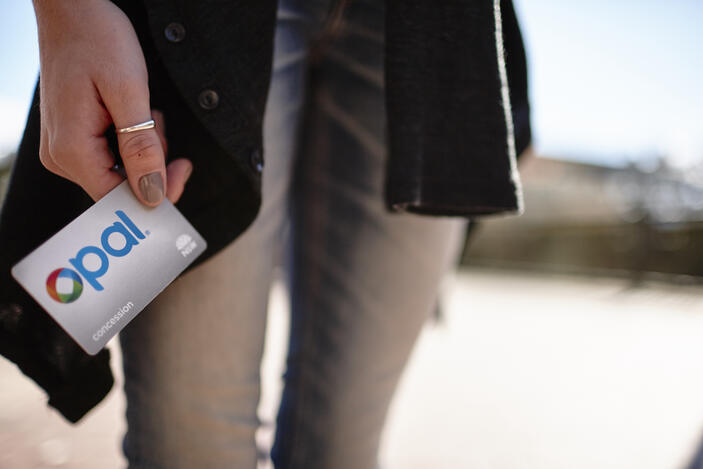
Concessions and entitlements
Concessions are available for eligible customers to travel on public transport across NSW.
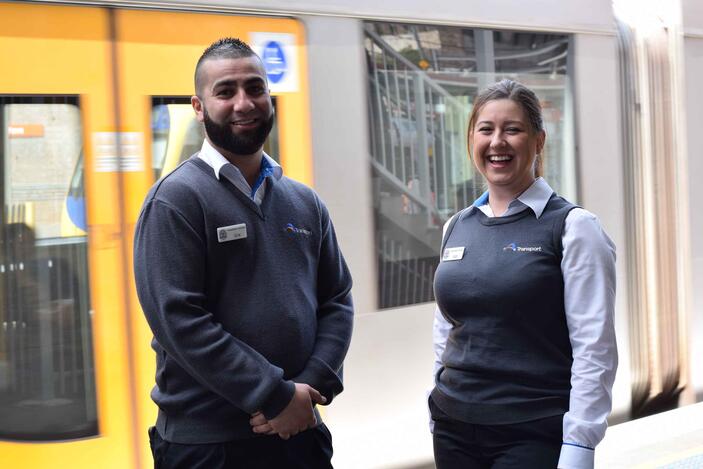
Fines and conditions of travel
You must travel with a valid Opal card or ticket. Fare evasion is a crime and fines apply.
- International edition
- Australia edition
- Europe edition
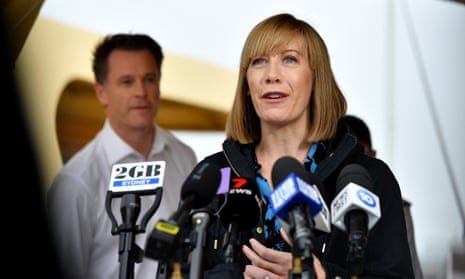
Sydney commuters face ‘tough time’ as T3 line replacement plan looks to buses and e-scooters
Transport minister ‘not going to sugarcoat’ disruption to 60,000 people to last until 2025
- Follow our Australia news live blog for latest updates
- Get our morning and afternoon news emails , free app or daily news podcast
Thousands of Sydney commuters will have their daily journey times more than doubled during the closure of one of the city’s major train lines , even if the government manages to hire 160 replacement bus drivers in the next two months.
And the government may still trial e-scooters as an alternative for people affected by the 12 to 14-month shutdown of the T3 line during its conversion into a metro line that can operate driverless trains.
Transport for New South Wales on Tuesday released its plan to accommodate up to 60,000 daily commuters who will be disrupted when the rail line between Sydenham and Bankstown is shut down from July.
The transport minister, Jo Haylen , on Tuesday said it would be an “inconvenient and difficult period for commuters in this part of Sydney”.
“We’re not going to sugarcoat this – communities along the T3 line are going to have a tough time,” she said.
“But there will be services available to them.”
Sign up for Guardian Australia’s free morning and afternoon email newsletters for your daily news roundup
The Inner West council is yet to make a decision on whether it will agree to the government’s request to host Sydney’s second e-scooter trial during the T3 shutdown in an attempt to mitigate the disruption.
TfNSW had proposed an e-scooter trial that would have linked 10 stations in the inner-west including Sydenham, Tempe, and Newtown so passengers could connect to other train lines.
Council staff wanted to cut the trial zone to only connect Dulwich Hill, Marrickville and Tempe stations, citing concerns about residents’ safety.
The trains that run on the existing line carry more than 1,000 commuters each at peak times.
Haylen on Tuesday said other e-scooter trials – such as the one in Sydney’s Kogarah – had been a “real success” but it was ultimately a decision for the council.
Commuters have been promised trains that will run every four minutes during peak times when the new metro line opens in 2025, completing the Metro City and SouthWest line.
Until then, the government will run “high-frequency” replacement bus services with three dedicated routes through Sydney’s inner west and southwest.
TfNSW’s latest forecasts predict an all-stops bus service between Sydenham and Bankstown to take 58 minutes in the evening peak, compared with 24 minutes by train.
The department – which is already struggling with a chronic shortage of bus drivers across Sydney – will need about 100 additional buses and 200 dedicated drivers to run the T3 replacement services.
Transit Systems, the private bus operator the government hired to run the replacement services, is in charge of recruitment. Its chief executive officer, Daniela Fontana, said on Tuesday the company had hired 40 drivers so far.
Haylen conceded Sydney’s regular bus network was not operating at a “reliable level” because of the driver shortage.
But she said she was “confident” Transit Systems could find another 160 drivers to make up the shortfall required for the dedicated T3 line replacement services.
“We’re confident in our partners and they might have met their targets so far,” she said.
“I’d also say this is a real opportunity for people wanting to try bus driving.”
David Babineau, NSW division secretary at the Rail, Tram and Bus Union, was doubtful enough drivers could be found.
“We’re over 200 drivers short on the normal bus network across Sydney,” he said.
Babineau said the RTBU was “fundamentally opposed” to the metro conversion project and was “considering its options going forward”.
The opposition transport spokesperson, Natalie Ward, said TfNSW data released this week shows driver vacancies were up 10% compared with the previous month and had reached a five-month high.
“The government has had 18 months to plan this conversion and instead have spent time and money on reviews,” she said.
- New South Wales
Most viewed
Accessibility Links

Hilary Cass: I can’t travel on public transport after gender report
Author of landmark review into transgender treatment tells of online abuse and her dismay at disinformation spread by, among others, a labour mp.

D r Hilary Cass has criticised the spread of “disinformation” around her report, including from a Labour MP, as she revealed she had been told not to travel on public transport over safety fears.
In an interview with The Times, the paediatrician behind last week’s landmark review on the treatment of transgender children said that young people were being put “at risk” by the spread of false information.
Following publication of her 388-page report, figures including the Labour MP Dawn Butler repeated claims that Cass had not included 100 transgender studies in it.
• Stonewall could ‘fix toxic trans debate’ by withdrawing claims against peer
Calling the assertion “completely wrong”, Cass said that it was “unforgivable” for people to undermine her report by spreading “straight disinformation”.
Advertisement
The physician, 66, who has spoken about the toxic debate around the issue, also revealed that she had been sent “vile” abusive emails and been given security advice to help keep her safe.
Of her critics, Cass said: “I have been really frustrated by the criticisms, because it is straight disinformation. It is completely inaccurate.
“It started the day before the report came out when an influencer put up a picture of a list of papers that were apparently rejected for not being randomised control trials.

“That list has absolutely nothing to do with either our report or any of the papers.
“If you deliberately try to undermine a report that has looked at the evidence of children’s healthcare, then that’s unforgivable. You are putting children at risk by doing that.”
In the days after the Cass review was published, activists claimed on social media that only two out of 100 studies were included in the report.
Butler told the House of Commons: “There are around 100 studies that have not been included in this Cass report and we need to know why.”
Cass explained that researchers had appraised every single paper, but pulled the results from the ones that were high quality and medium quality, which was 60 out of 103.
Of Butler, she added: “You don’t get up in parliament with an intent to spread misinformation … [but] what I was dismayed about, was the understanding she got [from the report].”
Cass’s NHS review found that an entire field of medicine aimed at enabling children to change gender had been “built on shaky foundations”. She found there was no good evidence to support the global clinical practice of prescribing hormones to under-18s to pause puberty or transition to the opposite sex.
The Gender Identity Development Service (Gids) at the Tavistock and Portman NHS Foundation Trust was ordered to close after her interim report found it “was not a safe or viable long-term option”.

Her final report — the world’s biggest review into the contested field of transgender healthcare — involved trans patients, families, academics and doctors.
Cass said she was pleased that, for the most part, both sides in the debate over the treatment of children with gender dysphoria had not “weaponised” her report. But she has still had to deal with a “pretty aggressive” response from some, particularly those in activist groups. She is also staying away from Twitter/X.
Cass said: “There are some pretty vile emails coming in at the moment. Most of which my team is protecting me from, so I’m not getting to see them.” Some of them contained “words I wouldn’t put in a newspaper”, she said.
She added: “What dismays me is just how childish the debate can become. If I don’t agree with somebody then I’m called transphobic or a Terf [trans-exclusionary radical feminist].”
Cass said the abuse spiked every time the review said something “people don’t like”.
Online discussion hardened following her interim report, in 2022, and the selection of Liz Truss as Tory Party leader and prime minister, she said. “That was when the debate got more aggressive and people got into bunkers, then the online furore heats up.”
But Cass, the former president of the Royal College of Paediatrics and Child Health, is remaining resolute, despite being thrown into the middle of the culture wars.
Asked if the abuse had taken a toll on her, she said: “No … it’s personal, but these people don’t know me.
“I’m much, much more upset and frustrated about all this disinformation than I am about the abuse. The thing that makes me seethe is the misinformation.”
She added: “I’m not going on public transport at the moment, following security advice, which is inconvenient.”
Last week it emerged that NHS adult gender clinics had finally agreed to share missing data on the outcomes of 9,000 patients who were treated as children at the Tavistock clinic.
• ‘Secretive’ gender clinics back down over puberty blocker data
Cass revealed that six clinics had thwarted her review by refusing to co-operate with research into the long-term impact of prescribing puberty blockers and sex hormones. She described their failure to share data as “co-ordinated” and “ideologically driven”.
She told The Times that during her review she had held a “really difficult” meeting with the clinics. They accused the review team of taking up their “valuable time”, she claimed.
“They were not particularly friendly to us when we approached”, she added.
Cass also revealed that the Tavistock clinic had refused to co-operate with the review by not handing over data on detransitioners who had been examined by a psychiatrist.
The review team wanted to assess what risk factors in a patient’s history could possibly be linked to detransition. A consultant who had carried out an audit of information from Gids patients had agreed to give it to the Cass team.
But Cass said: “We asked the Tavistock to have it and they wouldn’t give it to us. It was very disappointing.”
Following her report, Kemi Badenoch, the equalities minister, told The Sunday Times that there had been ideological capture of institutions, including the NHS , which needed to be corrected if Cass’s recommendations were to be fully delivered.
Cass responded yesterday by saying that there could plainly be ideological capture about “almost anything and certainly about this”.
In regards to Tavistock, she told The Times she had concluded “there were certainly one or two individuals … who I would describe as activists among the staff.”
However, she added: “I think the majority of staff believed what they were doing was right.”
With long waiting lists for the treatment of children with gender dysphoria, several private clinics have recently emerged to fill the void. Cass said she was concerned about that and claimed young people would not get the level of holistic care NHS clinics provided.

She singled out GenderGP, a Singapore-based firm founded by Dr Helen Webberley, a British medic, which continues to advertise puberty blocking injections.
• Private doctors who give children puberty blockers may be struck off
Cass claimed the care offered by Webberley “certainly doesn’t come anywhere near anything one would recognise as adequate in terms of a proper assessment and exploration”.
She is keeping a low profile following the publication of her report, but is adamant that she wants to help with the implementation of her review’s 32 recommendations.
Meanwhile, NHS England has announced a Cass-style review of adult gender clinics.
“You heard it right here: I am not going to do the adult gender clinic review,” Cass said.
Related articles

- Share full article
Advertisement
Supported by
Automatic Refunds and No More Hidden Fees: D.O.T. Sets New Rules for Airlines
The Transportation Department issued new requirements on refunds when flights are canceled or delayed and on revealing “junk” fees before booking. Here’s what passengers can expect.

By Christine Chung
The Transportation Department on Wednesday announced new rules taking aim at two of the most difficult and annoying issues in air travel: obtaining refunds and encountering surprise fees late in the booking process.
“Passengers deserve to know upfront what costs they are facing and should get their money back when an airline owes them — without having to ask,” said U.S. Transportation Secretary Pete Buttigieg in a statement, adding that the changes would not only save passengers “time and money,” but also prevent headaches.
The department’s new rules, Mr. Buttigieg said, will hold airlines to clear and consistent standards when they cancel, delay or substantially change flights, and require automatic refunds to be issued within weeks. They will also require them to reveal all fees before a ticket is purchased.
Airlines for America , a trade group representing the country’s largest air carriers, said in a statement that its airlines “abide by and frequently exceed” D.O.T. consumer protection regulations.
Passenger advocates welcomed the new steps.
Tomasz Pawliszyn, the chief executive of AirHelp, a Berlin-based company that assists passengers with airline claims, called it a “massive step forward and huge improvement in consumer rights and protection” that brings the United States closer to global standards in passenger rights.
Here’s what we know about the D.O.T.’s new rules, which will begin to go into effect in October.
There’s now one definition for a “significant” delay.
Until now, airlines have been allowed to set their own definition for a “significant” delay and compensation has varied by carrier . Now, according to the D.O.T., there will be one standard: when departure or arrival is delayed by three hours for domestic flights and six hours for international flights.
Passengers will get prompt refunds for cancellations or significant changes for flights and delayed bags, for any reason.
When things go wrong, getting compensation from an airline has often required establishing a cumbersome paper trail or spending untold hours on the phone. Under the new rules, refunds will be automatic, without passengers having to request them. Refunds will be made in full, excepting the value of any transportation already used. Airlines and ticket agents must provide refunds in the original form of payment, whether by cash, credit card or airline miles. Refunds are due within seven days for credit card purchases and within 20 days for other payments.
Passengers with other flight disruptions, such as being downgraded to a lower service class, are also entitled to refunds.
The list of significant changes for which passengers can get their money back also includes: departure or arrival from an airport different from the one booked; connections at different airports or flights on planes that are less accessible to a person with a disability; an increase in the number of scheduled connections. Also, passengers who pay for services like Wi-Fi or seat selection that are then unavailable will be refunded any fees.
Airlines must give travel vouchers or credits to ticketed passengers unable to fly because of government restrictions or a doctor’s orders.
The vouchers or credits will be transferable and can be used for at least five years after the date they were issued.
Fees for checked baggage and modifying a reservation must be disclosed upfront.
Airlines and ticket agents are now required to display any extra fees for things like checking bags or seat selection clearly and individually before a ticket purchase. They will also need to outline the airline’s policies on baggage, cancellations and changing flights before a customer purchases a ticket.
The rules, which apply to all flights on domestic airlines and flights to and from the United States operated by foreign airlines, have varying start dates.
For example, automatic refunds must be instituted by the airlines within six months. But carriers have a year before they’re required to issue travel vouchers and credits for passengers advised by a medical professional not to fly.
Follow New York Times Travel on Instagram and sign up for our weekly Travel Dispatch newsletter to get expert tips on traveling smarter and inspiration for your next vacation. Dreaming up a future getaway or just armchair traveling? Check out our 52 Places to Go in 2024 .
Christine Chung is a Times reporter covering airlines and consumer travel. More about Christine Chung
Open Up Your World
Considering a trip, or just some armchair traveling here are some ideas..
52 Places: Why do we travel? For food, culture, adventure, natural beauty? Our 2024 list has all those elements, and more .
Mumbai: Spend 36 hours in this fast-changing Indian city by exploring ancient caves, catching a concert in a former textile mill and feasting on mangoes.
Kyoto: The Japanese city’s dry gardens offer spots for quiet contemplation in an increasingly overtouristed destination.
Iceland: The country markets itself as a destination to see the northern lights. But they can be elusive, as one writer recently found .
Texas: Canoeing the Rio Grande near Big Bend National Park can be magical. But as the river dries, it’s getting harder to find where a boat will actually float .

IMAGES
VIDEO
COMMENTS
Use the Trip Planner to plan a trip on public transport by metro, train, bus, ferry, light rail, coach or by walking, cycling, taxi or rideshare anywhere in Sydney and NSW, with real-time information where available. ... Travel to and from Sydney Airport. Information about accessible travel, safety and security, travelling with prams and late ...
Sydney public transport Transport for NSW provides a variety of ways to get around the city, as well as information for motorists. Use the trip planner at transportnsw.info to plan your travel. Opal card info The Opal card is an easy, convenient way of paying for your travel on public transport in Sydney.
How to use public transport to get around Sydney and NSW. Travel to and from Sydney Airport. Information about accessible travel, safety and security, travelling with prams and late night transport. ... Opal Travel is the only official Transport for NSW Opal app and it's free. Transport apps. Download an app to view transport options while ...
Sydney has plenty of accessible attractions that can be reached by public transport. Check the Transport NSW's Accessible travel page for information on using a wheelchair or mobility device on public transport, or select the 'Accessible services only' option when using Transport NSW's Trip Planner tool.. Sydney Airport provides special assistance for people with disabilities and can ...
As a sprawling, beachside state capital with more than five million residents, public transport is essential for Sydney. The city is Australia's leading public transport hub, with 20.9 percent of residents using it to travel to work in 2016, compared to 13.4 percent of Melbourne residents. The public transport in Sydney has steadily improved over the past decade as the city has become less ...
These are the best trips via public transport in Sydney. Bus 389 Interesting bus route from Darling Harbour to Bondi Junction. Bus B1 Express bus from Wynyard to the Northern Beaches. City Circle does a loop of city train stations, making it handy for most attractions in the center.
Walking and cycling. Best for: Shorter distances in peak commute times. Price: Walking is free (duh) and bike share services range from $0.30-$2 per 30 minute block. Like most major metropolitan ...
All you need to travel on public transport is an Opal Card. Bus [edit] Buses operate all over Sydney and most of its surroundings. Train [edit] As of April 2021, there are 8 train lines in Sydney excluding metro and 5 intercity train lines. Sydney Train Lines [edit] T1 : North Shore and Western Line [edit] About [edit]
The 12-day initiative covers all services on the Opal network including trains, trams, buses and ferries. NSW TrainLink regional services and XPT and Xplore bus services are not covered. Commuters ...
Safety and night travel on Sydney's public transport. Between the hours of 3.00 pm and 6.00 am there are high visibility police officers and plainclothes officers patrolling stops as well as trains, buses, ferries, and light rail services. There is also a network of 10,000 CCTV cameras to provide further safety to travelers.
If you are visiting Sydney and the surrounding regions, an Opal card is the most convenient and affordable way to pay for your fares on public transport. Opal cards can be used for travel on public transport in Sydney, the Blue Mountains, Central Coast, the Hunter and the Illawarra. For all the details go to Opal for visitors - the best way ...
All amounts are in Australian Dollars and are subject to change without notice. Opal Card or Contactless Payment - Valid on CityRail, Sydney Ferries Sydney Buses and Metro Light Rail. Adult. Children 4 to 15. Opal Card Train - Peak Single trip. $4.00 to $9.84 depending on distance.
A Visitor's Guide to using Sydney Opal Card. Mastering the Sydney Opal Card System will help you make use of the city's extensive public transport system that includes trains, buses, ferries and light rail. This is an electronic ticketing system that allows you to use one card (or app) across all these types of transport. I hope this ...
The good news is that once you spend $16.80 in a day, your remaining trips are free. Getting around Sydney by public transport on weekends and public holidays is even better, as after you've spent $8.40, your remaining trips are free! Just note that the Airport train isn't included in the public transport in Sydney travel caps.
Opal for visitors. If you are visiting Sydney and the surrounding regions, an Opal card is the most convenient and affordable way to pay for your fares on public transport. Find out more about Opal for visitors.
Using Sydney's Public Transport 2024. There is no need to hire a car for your time in the city. Sydney's public transport is easy to use, and once you work out the basics, I am sure you will find it convenient. Below is your crash course on how to get around Sydney on your holiday; consider it a brief introduction to using Sydney's public ...
1. During the enrolment task you will be asked to give consent for us to share your details with Transport for NSW. You will need to do this each time you re-enrol in your course. You can also provide your consent at any time through Sydney Student (go to 'My details, 'Personal details'). Allow two business days for this information to reach ...
You must travel with a valid Opal card or ticket. Fare evasion is a crime and fines apply. Tickets and fares for train, bus, ferry, light rail and coach within Sydney and in and around NSW. Find out about Opal, book NSW TrainLink regional train and coach services and view concessions and ticket eligibility.
Transport minister 'not going to sugarcoat' disruption to 60,000 people to last until 2025 ... Travel; Money; Search input . google-search ... Haylen conceded Sydney's regular bus network ...
Transport for NSW will mark Anzac Day by broadcasting the Last Post at Sydney Trains, NSW TrainLink and Sydney Metro stations. Discounted travel will be available on NSW TrainLink regional services with return travel provided at the price of a single ticket between Wednesday 24 to Friday 26 April inclusive.
D r Hilary Cass has criticised the spread of "disinformation" around her report, including from a Labour MP, as she revealed she had been told not to travel on public transport over safety ...
The Transportation Department on Wednesday announced new rules taking aim at two of the most difficult and annoying issues in air travel: obtaining refunds and encountering surprise fees late in ...